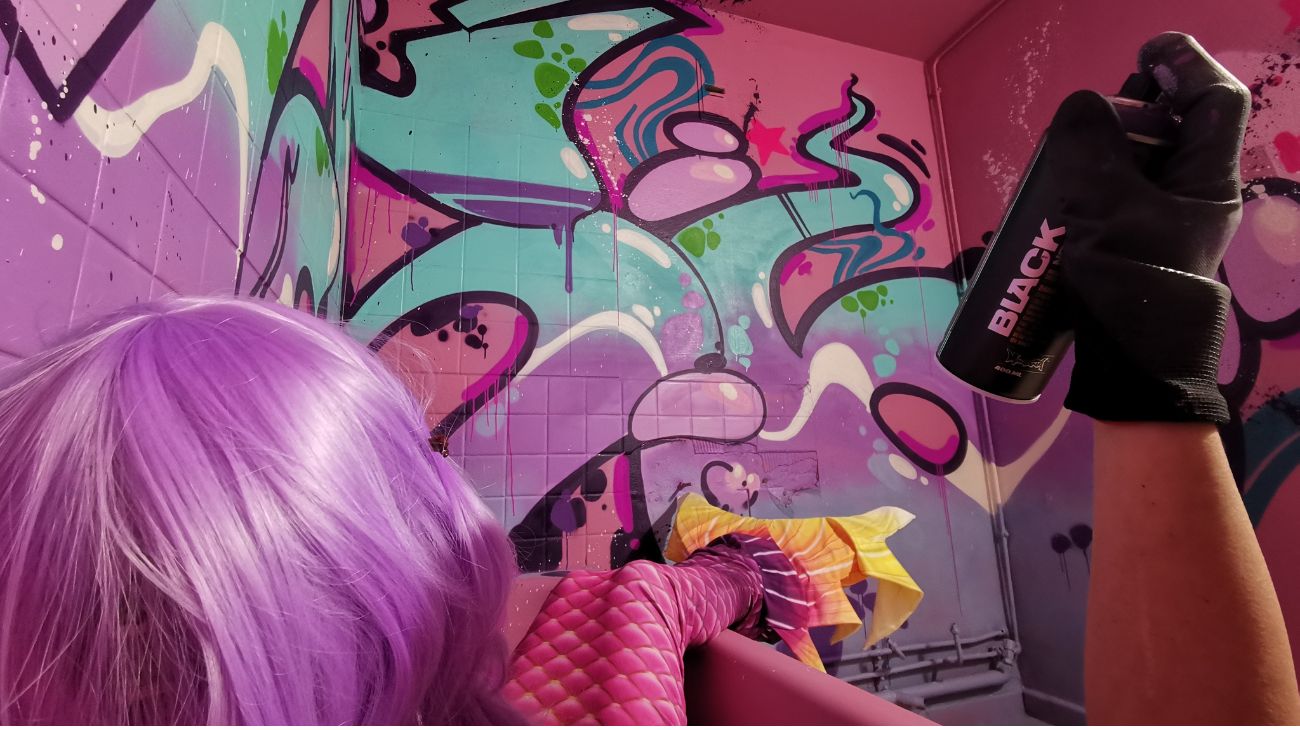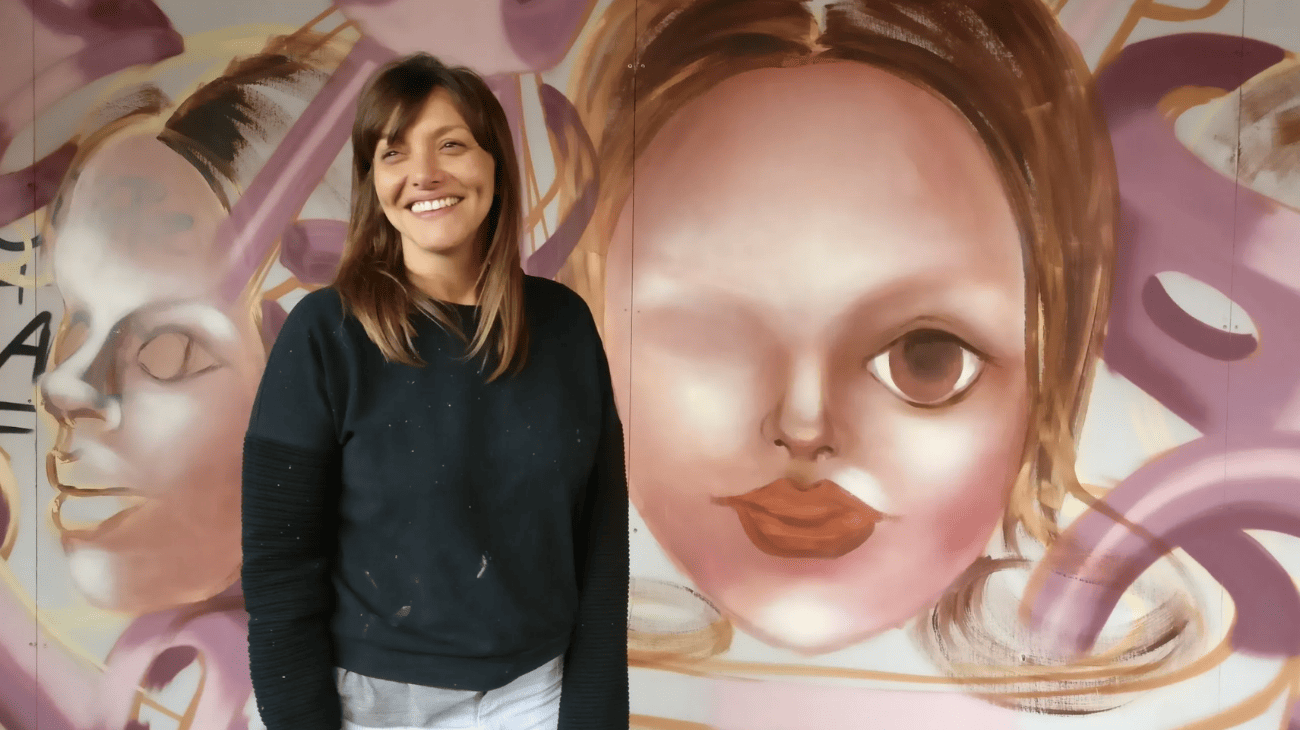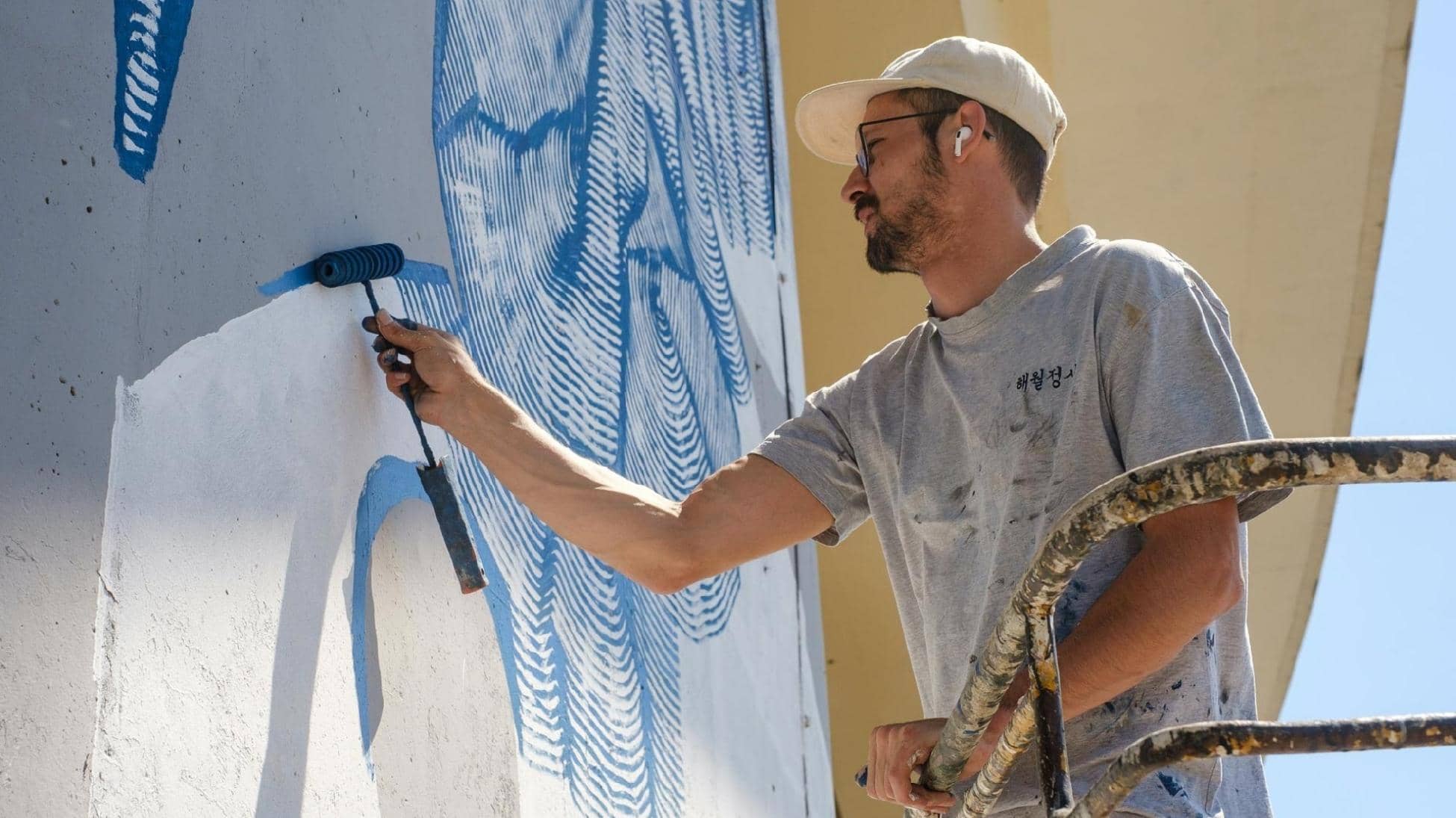
SKIRL
Interview with the Viennese urban artist Manuel Skirl:
I think I first had to show myself and others that I could put just as good graffiti on the streets as everyone else, and then realize that I actually wanted to do something completely different. And then I let it all run its course, without considering other opinions or expectations, and focused entirely on what makes me happy and how I envision it.
At the age of 15 you started with graffiti, which determined the first 12 years of your artistic career. At some point you replaced the spray cans with multi-line tools and dedicated yourself to abstract painting and murals. Professionally, you also first tried your hand as a medal engraver and educator in a kindergarten before turning to art full time. How did you get into art in general and street art in particular? What appeals to you about expressing yourself in public space?
It’s not that I created art and then one day decided to put it on the street. I generally found access to drawing and painting extremely early, as a child, because my mother encouraged it very strongly and also valued it highly. Through this I have always built up my ego, or referred to my self-esteem. I actually think that I never had to find the connection to art; I just never lost it. I think as children, we almost all have a connection to art, but only later is it no longer suggested to us as something good or important, something that you can “become”, because very few end up becoming full-time artists.
In my adolescence and teenage years, I then oriented myself more outdoors; I was out and about a lot with friends and experimented with graffiti and tagging. Both were good tools for me to release my stress and express myself. Especially as a teenager, it was a lot about being “cool” and being recognized, and that was a way for me to not only survive in the world I grew up in, but also to be viewed quite well, and to be able to build up my self-esteem in that way, as I had done since my childhood.
That means I’m relatively athletic, I have a slight need to push boundaries and don’t always necessarily respect every rule, and I really like drawing and painting. These three things in combination then inevitably led to graffiti and then, after many years, to what we now call street art.
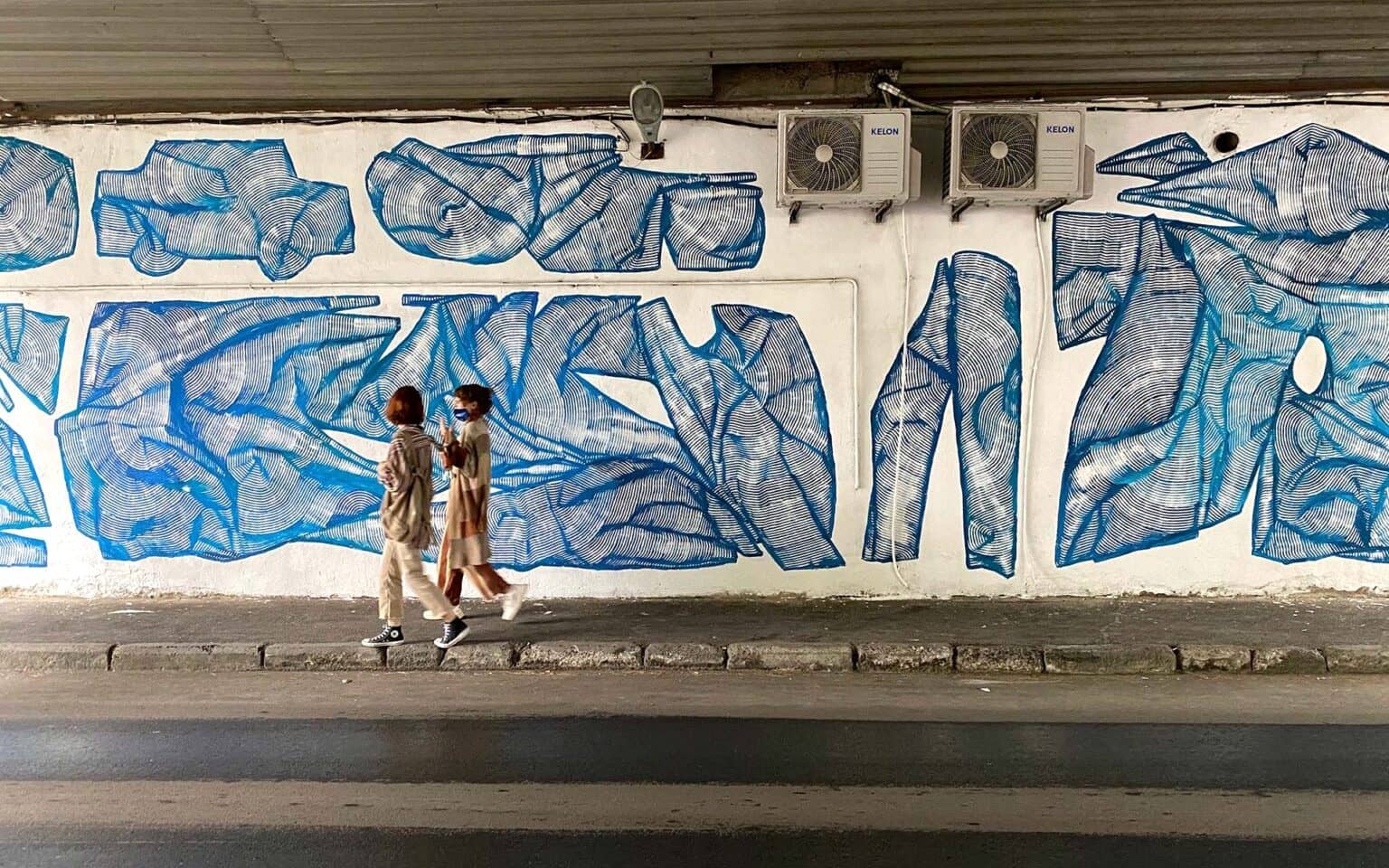
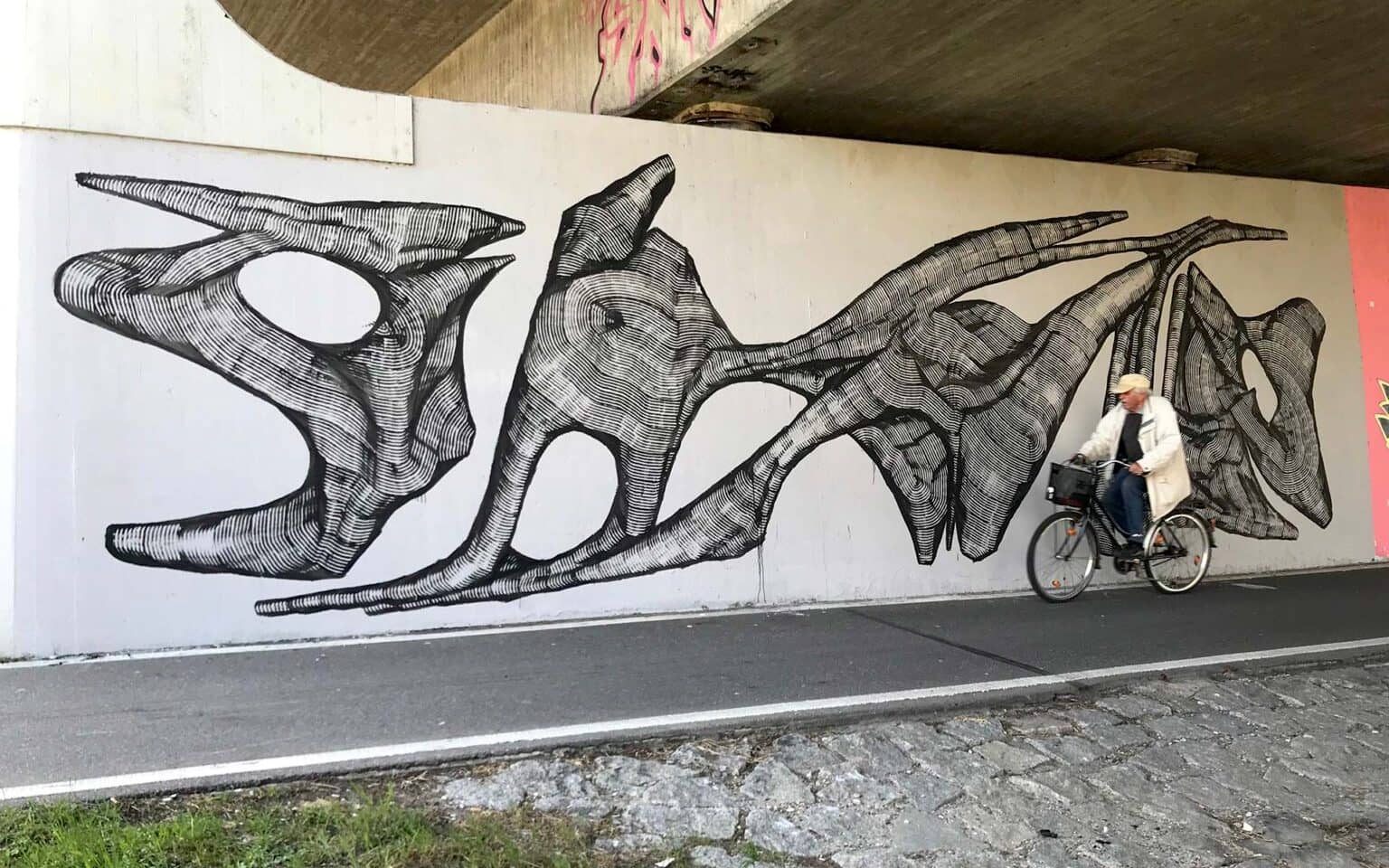
How did the stylistic change come about, away from graffiti to your current style?
I started, as I said, when I was 12 years old and I began to write my name with Eddings everywhere and started to spray smaller graffiti. Now, graffiti is judged by certain parameters, which means you try to stick to these “rules” so that others find your graffiti cool and judge it as successful, for example because it looks “super hip-hop” or has this and that. I also tried for a long time to conform to what others think is cool, but after about ten years it just got boring. I tried to change my style and make something out of it that wasn’t necessarily the same as what everyone else was doing. However, in retrospect, I didn’t take that step until I had already proven myself in the scene. I think I first had to show myself and others that I could put just as good graffiti on the streets as everyone else, and then realize that I actually wanted to do something completely different. And then I let it all run its course, without considering other opinions or expectations, and focused entirely on what makes me happy and how I envision it. So colors disappeared over time and, more and more, structures and lines were added.
The reason I use the tool I use now is because I had a thrombosis in my axillary vein in 2017, and then realized I couldn’t continue to work with spray cans as much. After almost 15 years of working with spray cans, it was a difficult reorientation process, but in retrospect I’m glad it all happened the way it did, because it made an extreme difference style-wise. Strong crises and extraordinary moments that are not so pleasant are often also the ones that bring about great changes.
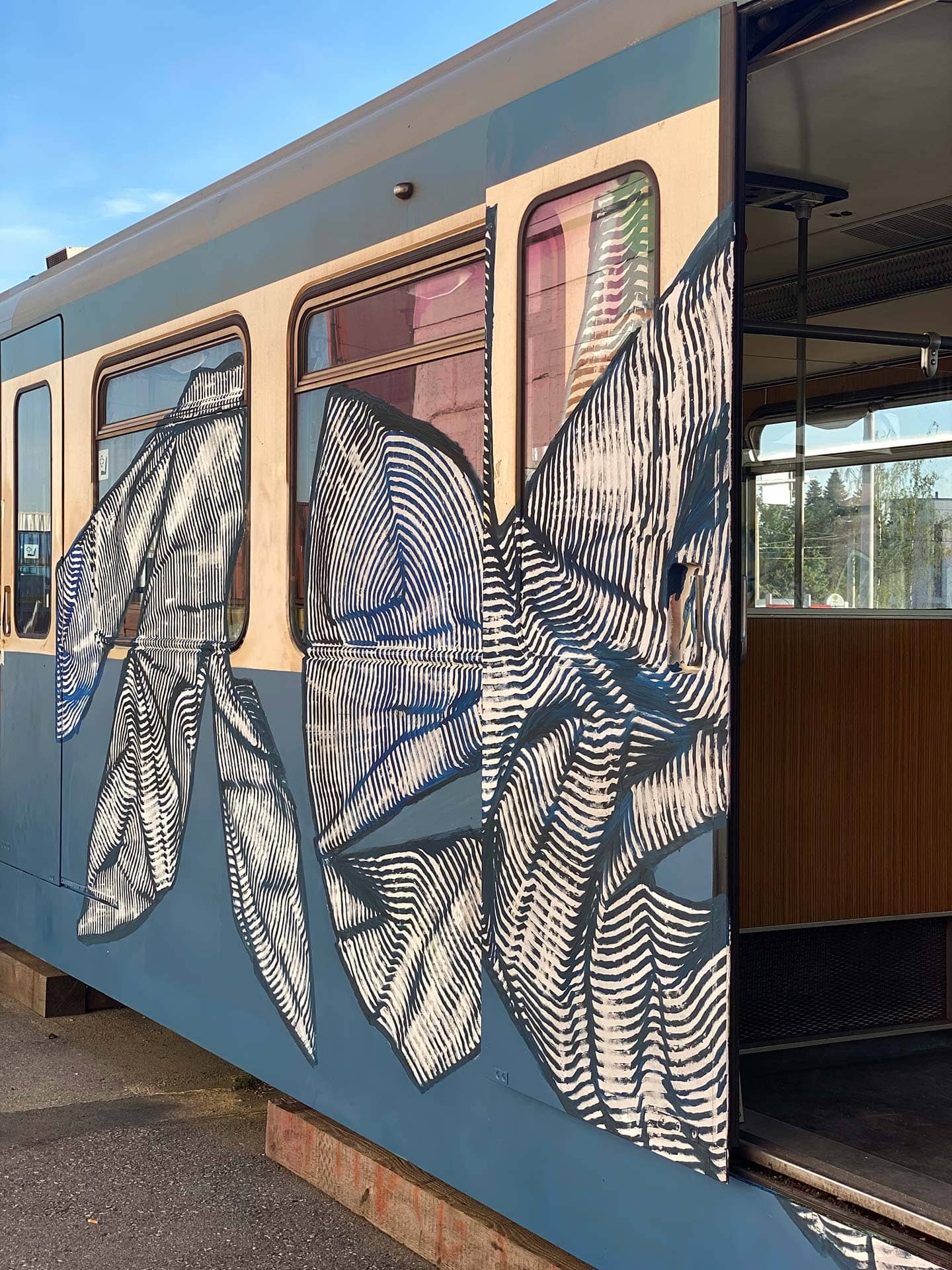
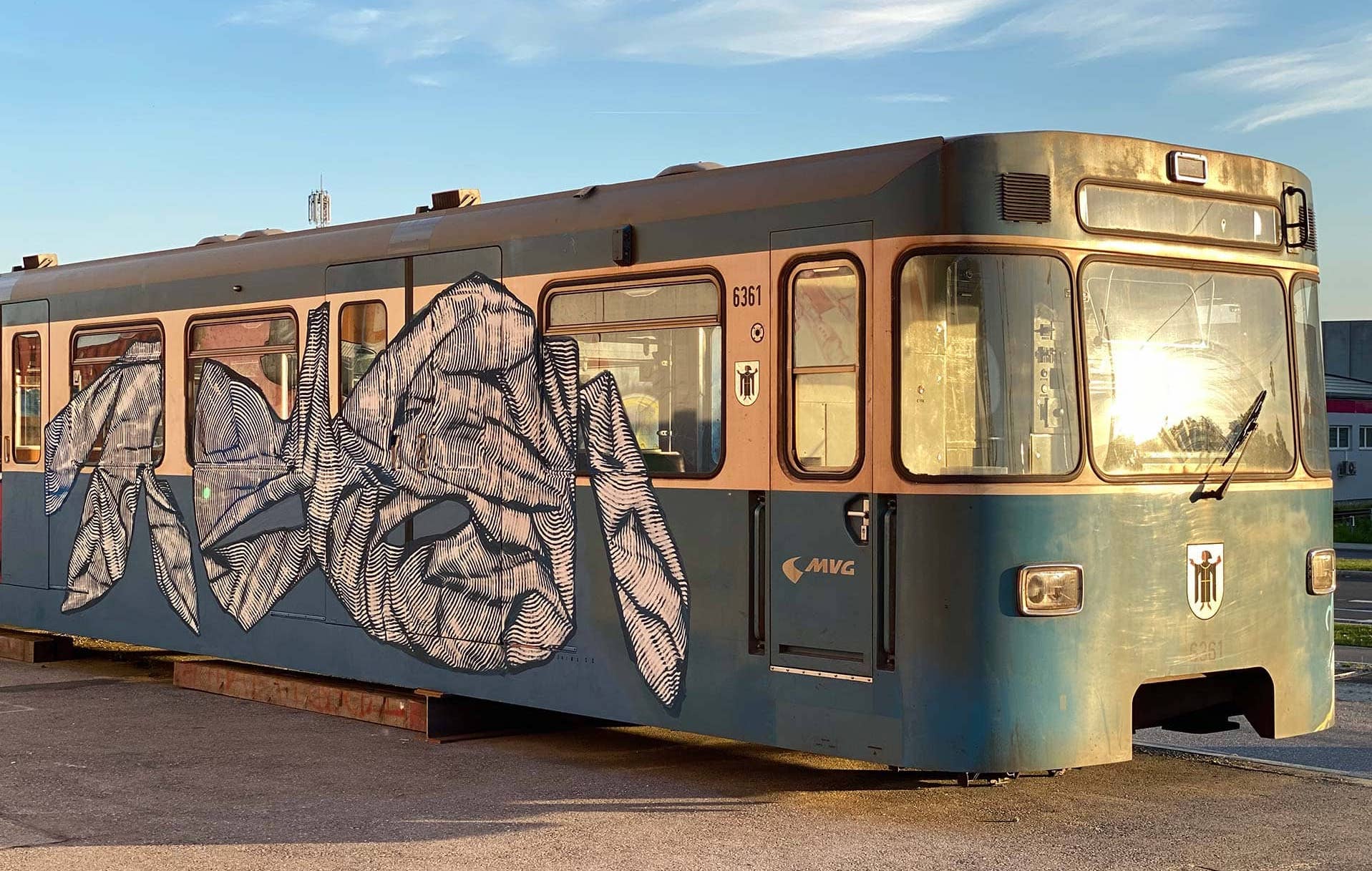
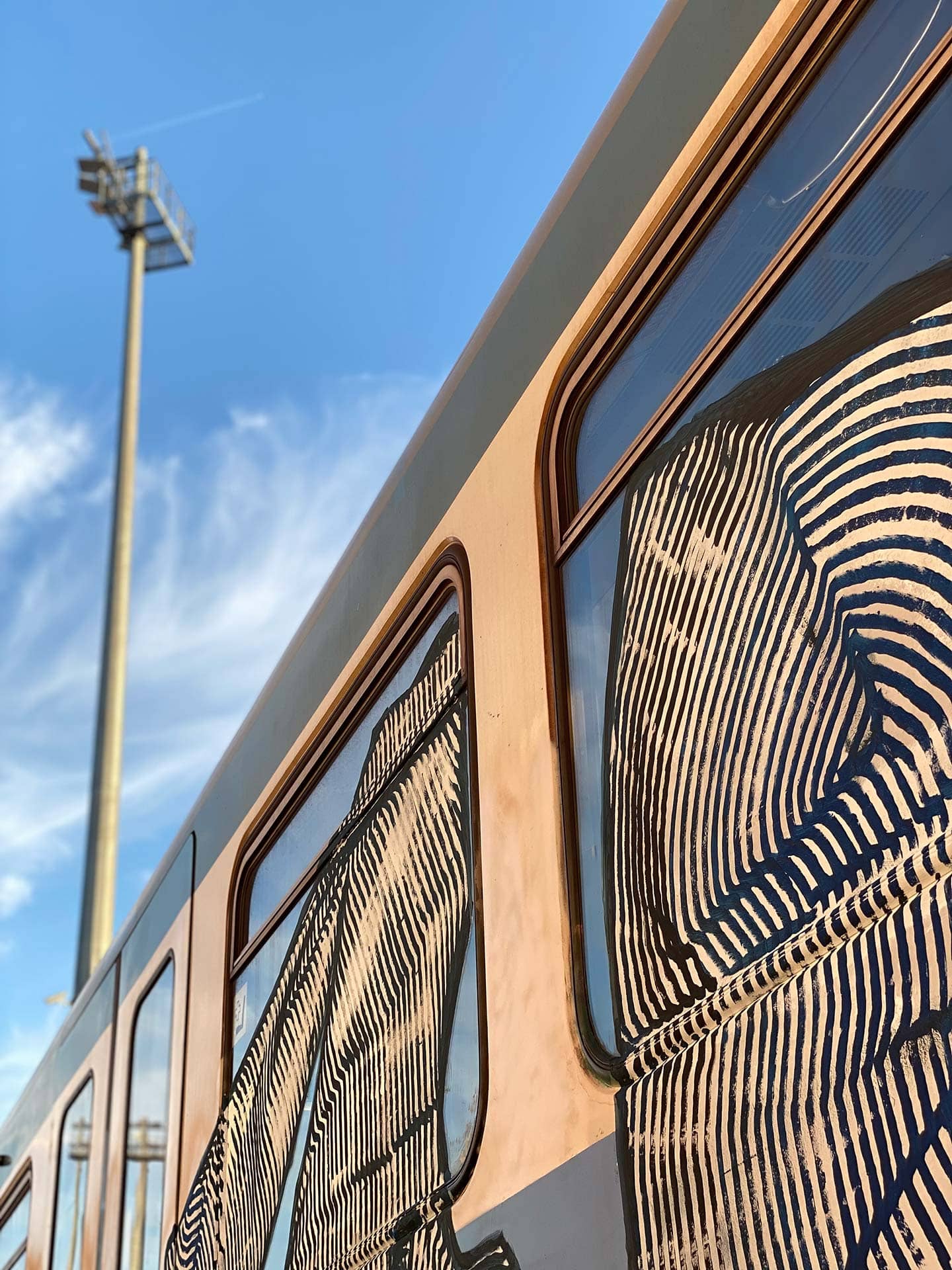
The texture and style of your works are reminiscent of waves and tree bark, patterns, and symbols of nature – a juxtaposition of precise lines and organic shapes that captivate the viewer with their dynamic, powerful yet graceful, almost filigree composition, creating a visual tension and sense of movement. What stories do your works tell? What reactions or thoughts do you want to trigger in viewers?
I have no particular message, no particular meaning, thought or theme that I want to express with my images. I actually focus more on what is inside me and try to represent the things for me aesthetically, stable, balanced and speaking in my technique, technically good. What that triggers in the viewer I do not care, but you find in it what you want to find.
My art is also not purely abstract, rather figurative-abstract. Quite often, for example, bodies and heads appear. I often catch myself, for example, with more foot-like formations appearing at the bottom of a work and head-like ones at the top. But only very roughly. Often, when I look at things with a little time distance, I then notice figurative elements strongly, but I had not actually implied or wanted these.
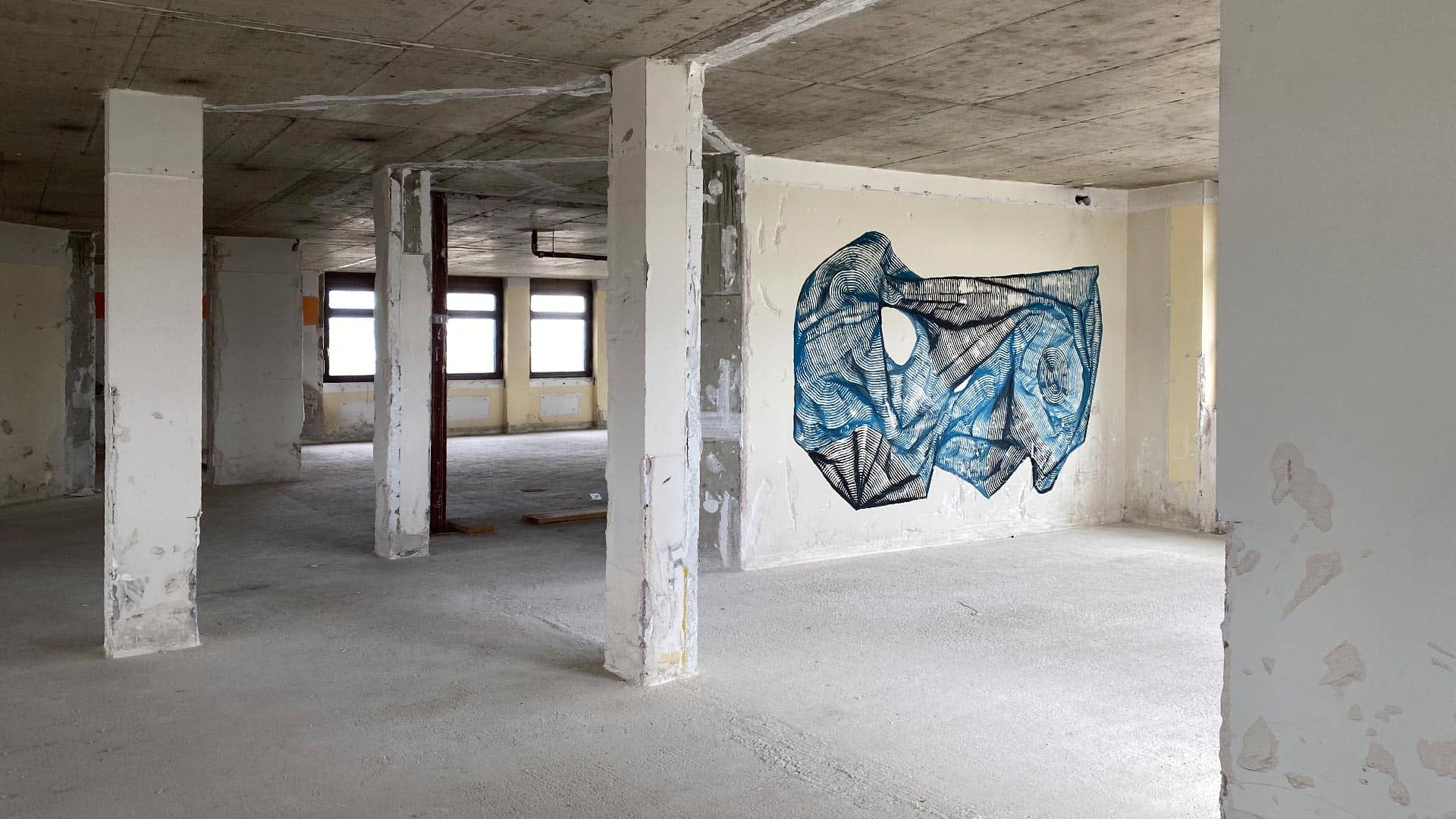
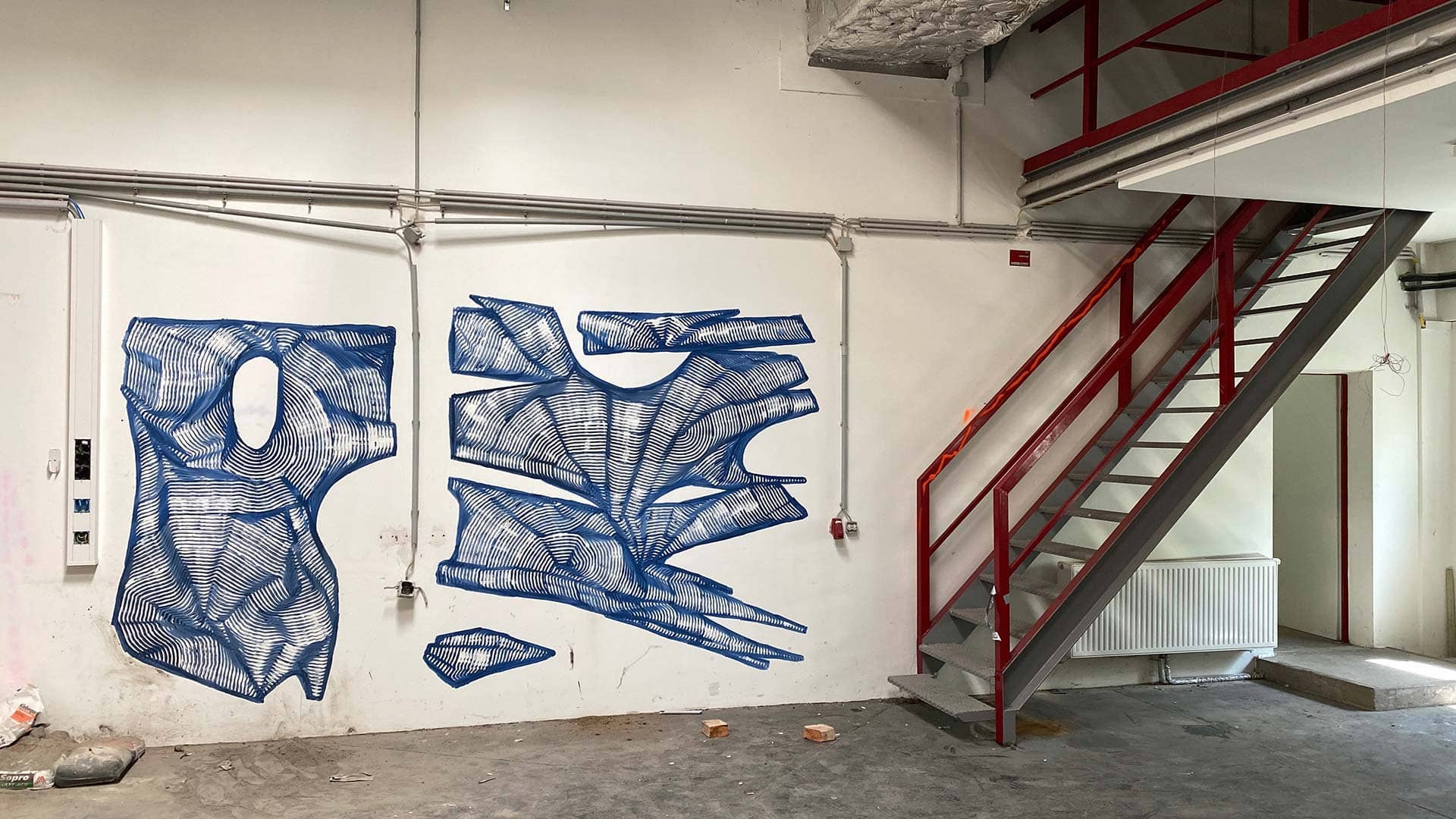
Do shapes that you encounter in everyday life or in nature serve as a source of inspiration for you?
Yes, but I don’t actually think about it at all. I’m constantly driven by thoughts; I think too much rather than too little, and drawing and painting is more of a meditative process for me to switch off. I try not to think much in the process but rather concentrate on making sure the lines are all nice and parallel to each other.
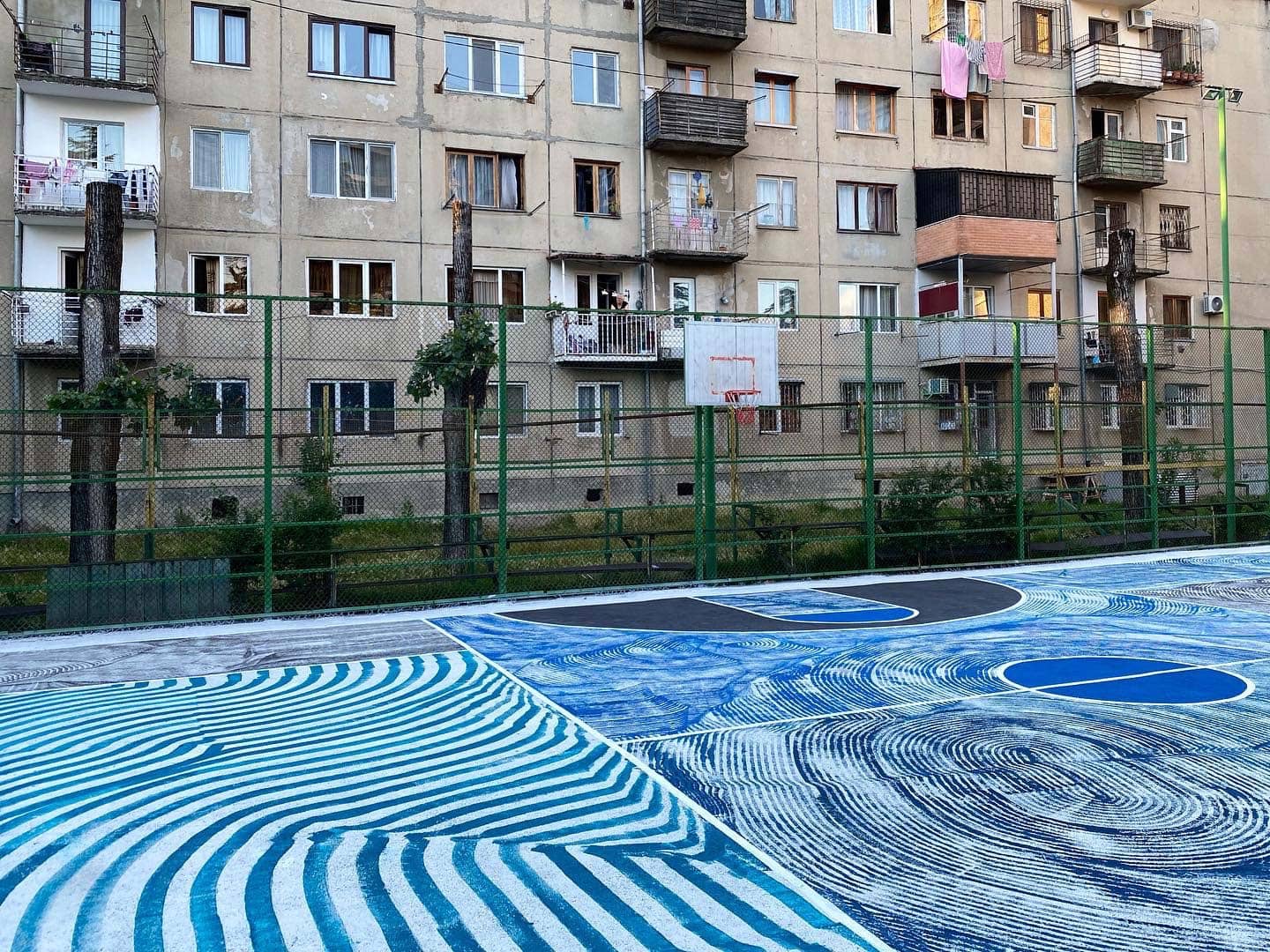
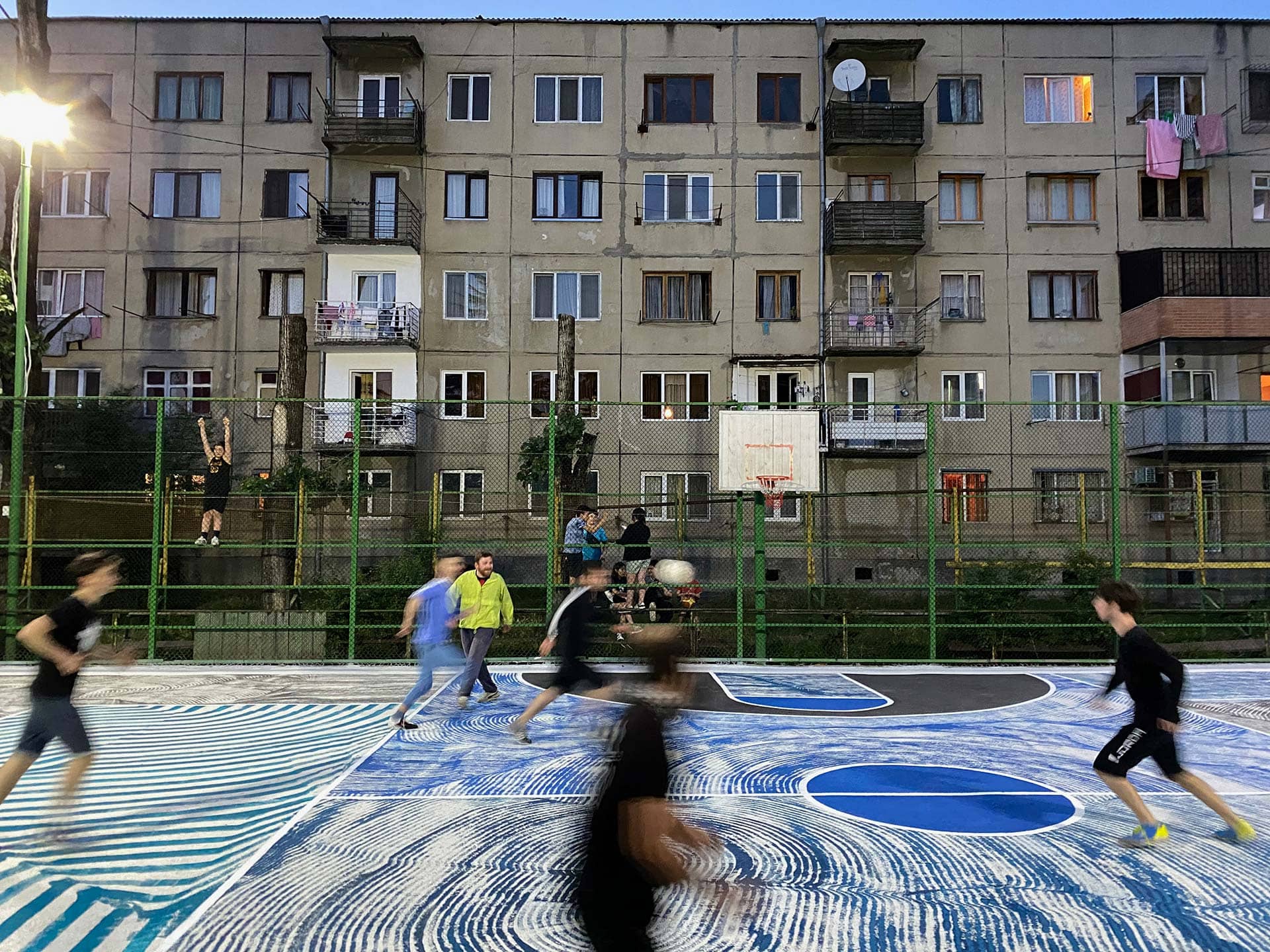
Are there other artists who inspire you or whom you particularly appreciate?
Definitely. I’m very well networked and have great artists in my circle of friends, including exciting, very talented, young up-and-coming artists, with whom I can exchange artistic, technical, and also economic ideas. They have a strong influence on me. Of course, I also follow the current work of international artists on the internet, but I try to reduce that, because it gets too much for me very quickly. Otherwise, I also like to go to the museum or go for a walk in the forest and look at grown forms. I have collected countless photos of leaves, bark, vines, or even dead animals. For outsiders perhaps these are extremely strange-looking references, but they have somehow captured me.
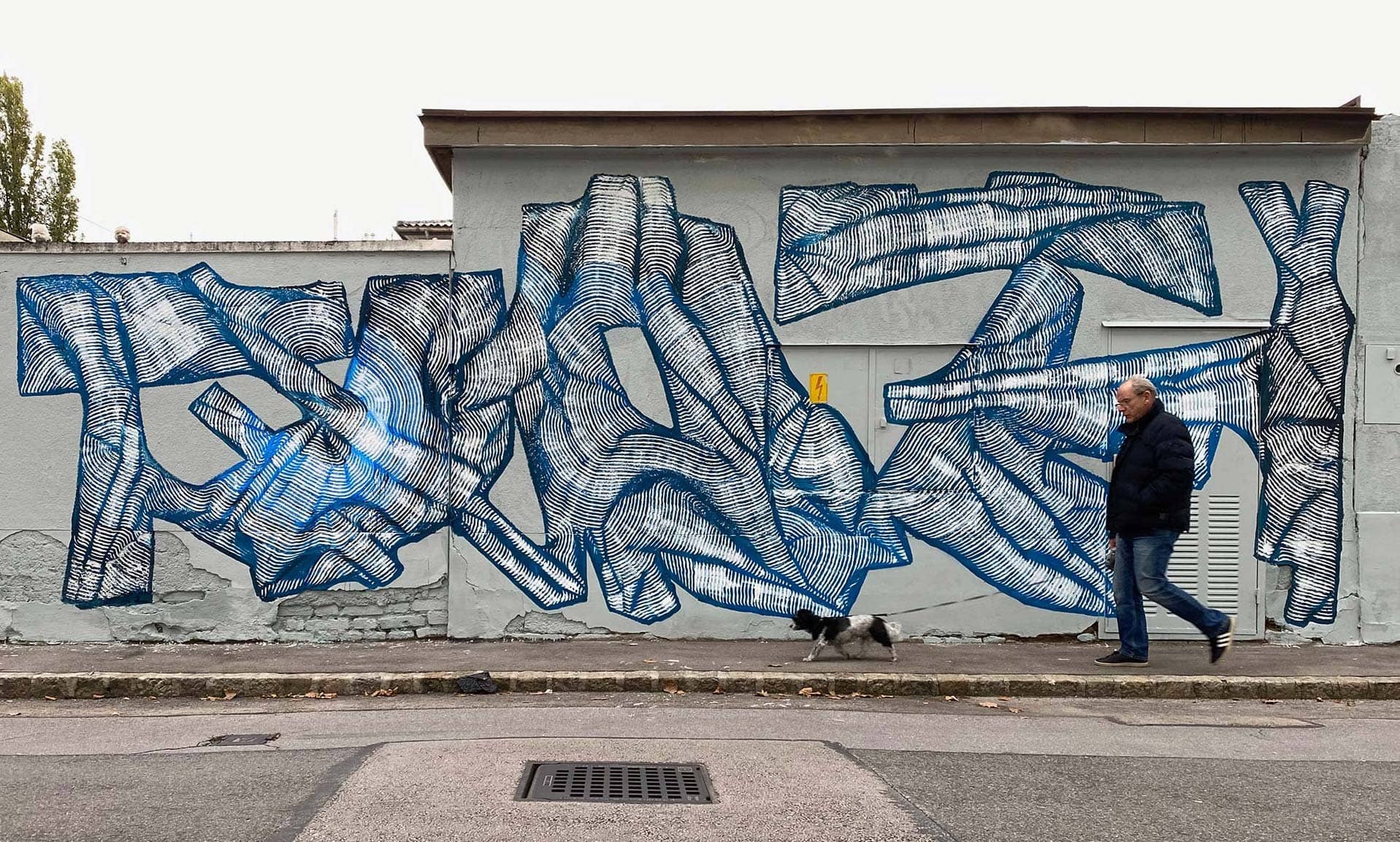
You use a technique that allows no mistakes. Every stroke has to be right, unlike when you work with spray cans. How do you approach the creation of new works? Do you create a draft in advance or do you let yourself fall into the moment and create out of spontaneity? What is your creative process and technical approach?
That depends on whether I paint a picture for myself, as a reference or simply for the photo, or whether it is a commissioned work. In the latter case, if a person pays or compensates me for it, then at least an agreement or a rough sketch is usually required. That is, I have to show roughly, on the basis of other projects or examples, how I will do it approximately, and some people want to know exactly, even if I make it clear beforehand that I cannot paint every line exactly like this.
When I do something for myself, or simply paint a few canvases or pictures that I offer for sale, then I paint completely intuitively. I have no real plan, no clear idea or a guideline. I collect basic shapes in a sketchbook that sometimes serve as a base for me – very simple, abstract compositions, cryptic basic shapes that fit together stably.
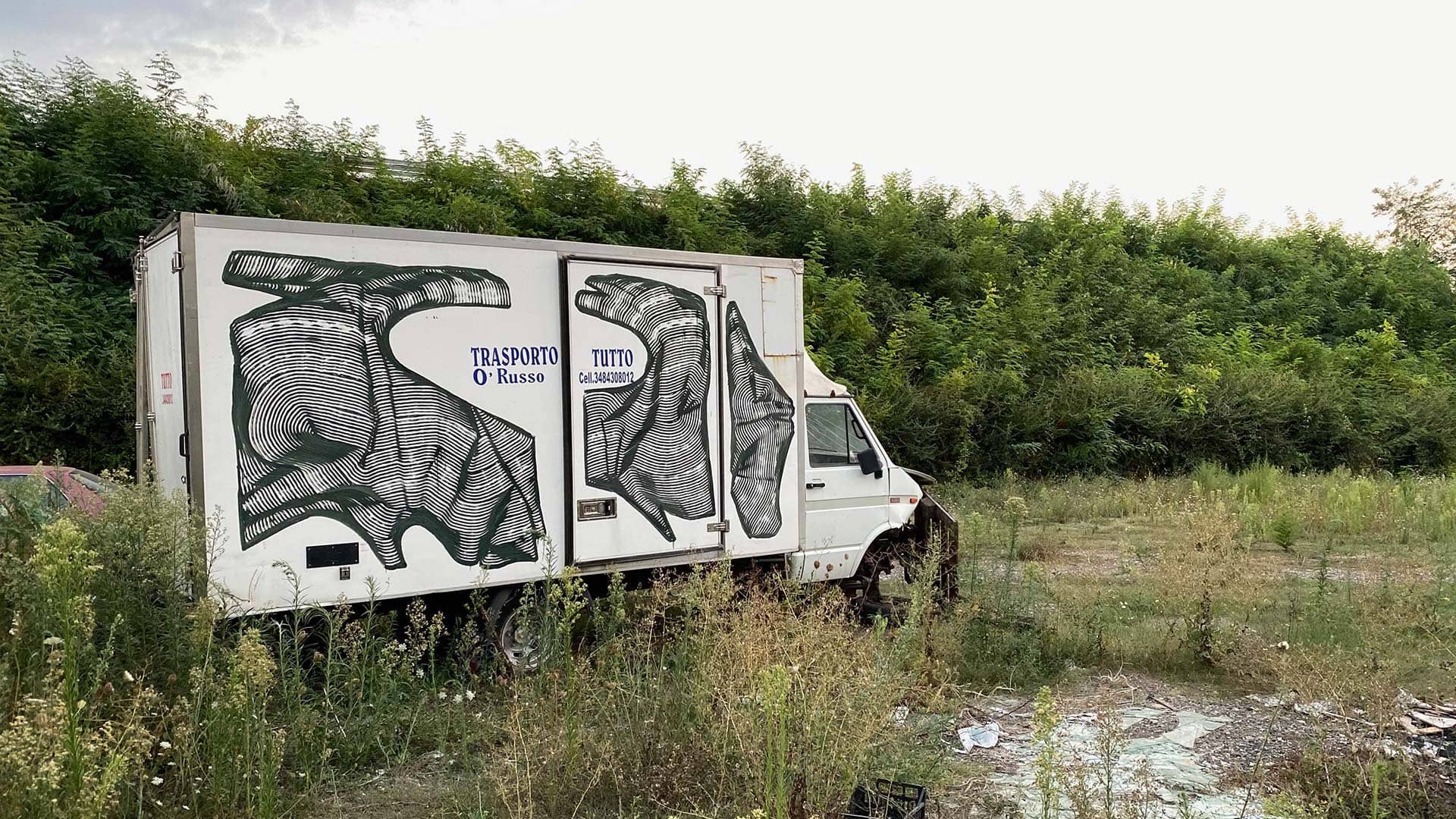
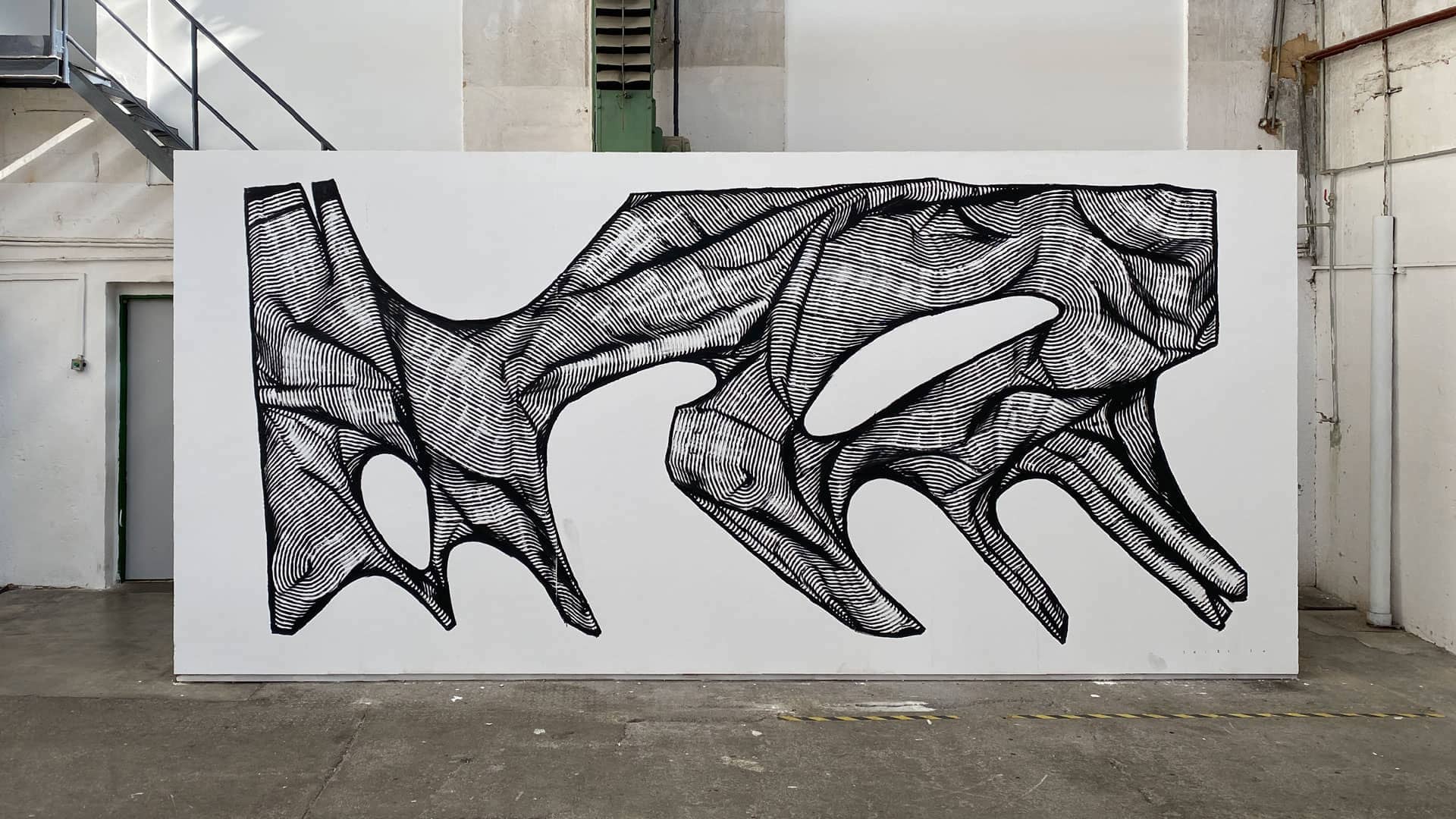
Why are your works almost all in black and blue?
To be honest, I simply find all other colors ugly. You won’t find anything orange, yellow or purple in my home or in my clothes. I have some kind of tick; some colors just can’t appear in my pictures and the same goes for the objects I surround myself with. Colorful, flashy, laser style is the worst; it’s highly unappealing to me, sometimes even overwhelming.
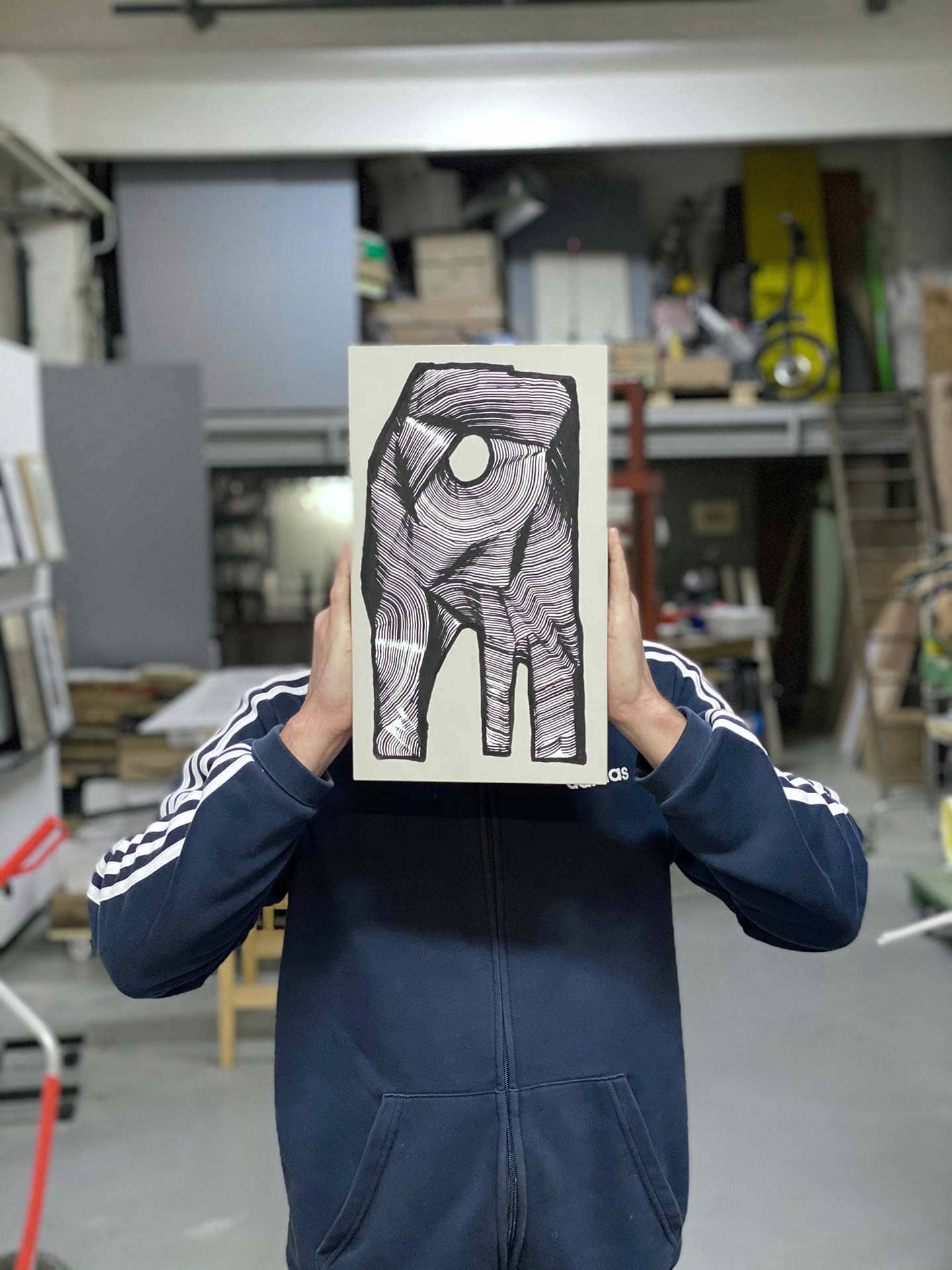
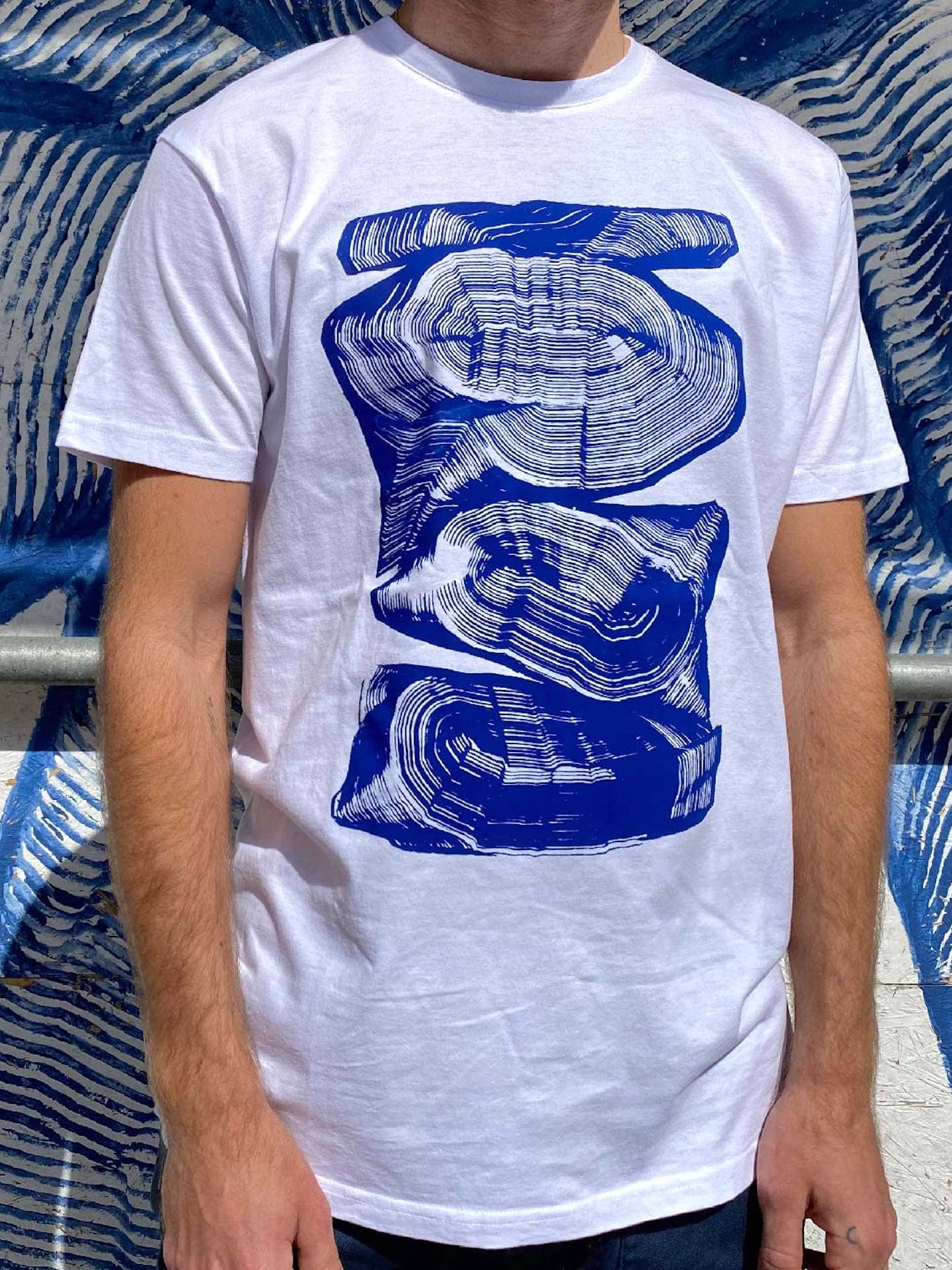
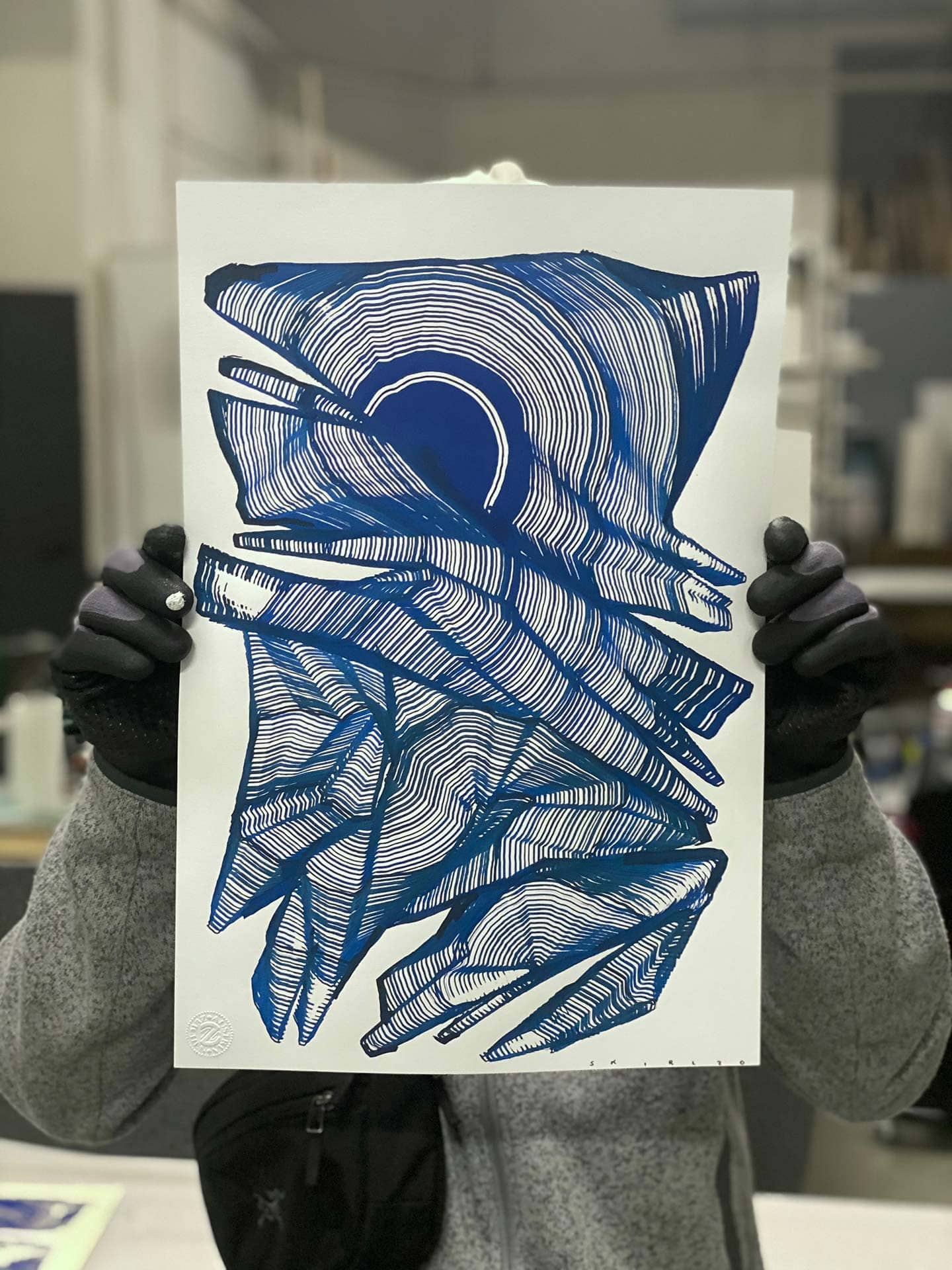
How much do the place and context in which you create your work influence your creative process?
Place and context have an extreme influence on my creative process. I’ve already said that my creative process is very intuitive, almost meditative, so I’m extremely influenced by the context, the structural conditions, the conversations and the people, the little anecdotes, the way they present their country or their company. Even if I go somewhere with a plan, it can still change a lot due to circumstances. But I generally try to adapt my images to the circumstances, to what is happening there and what is taking place there, and not to force them in somewhere.
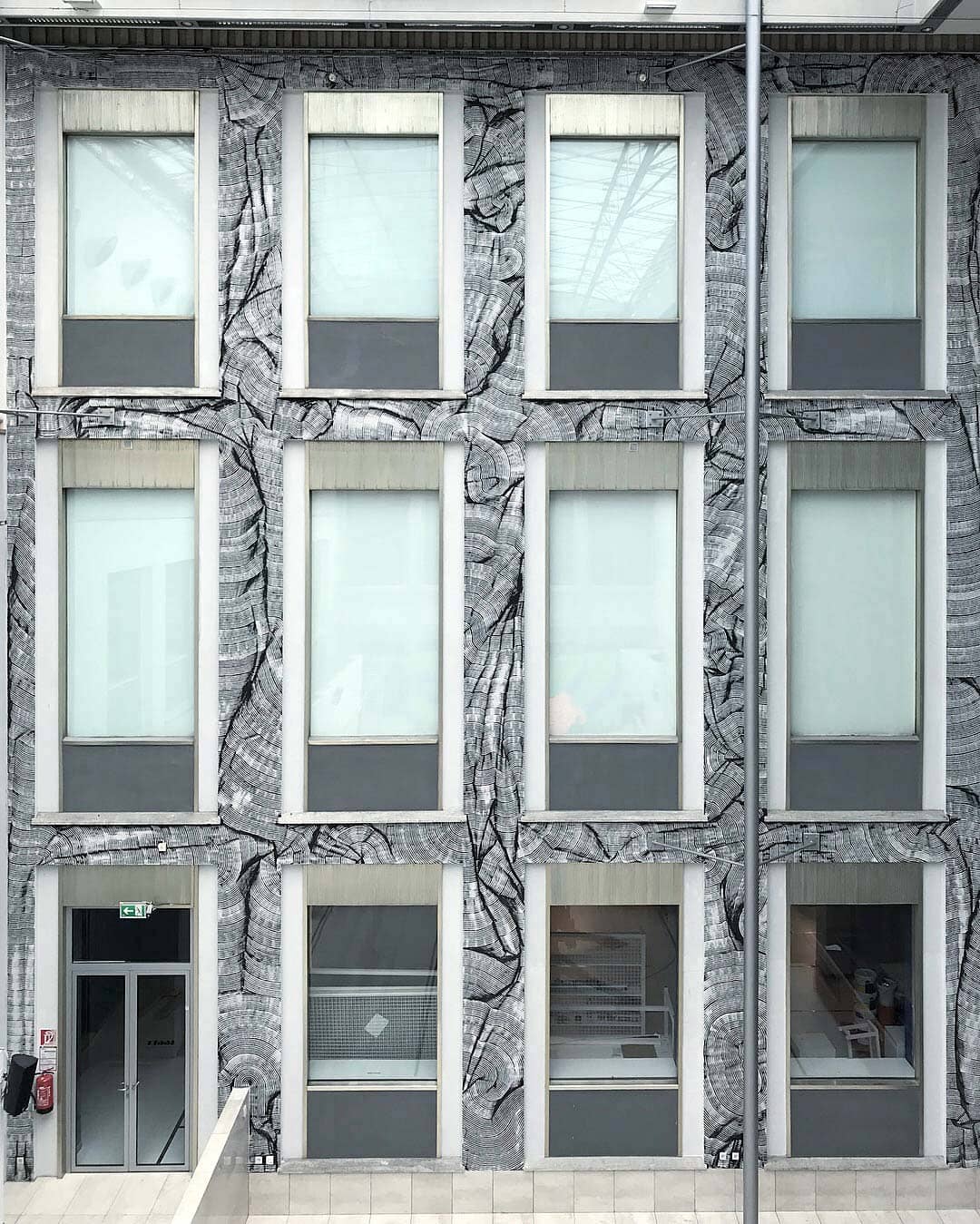
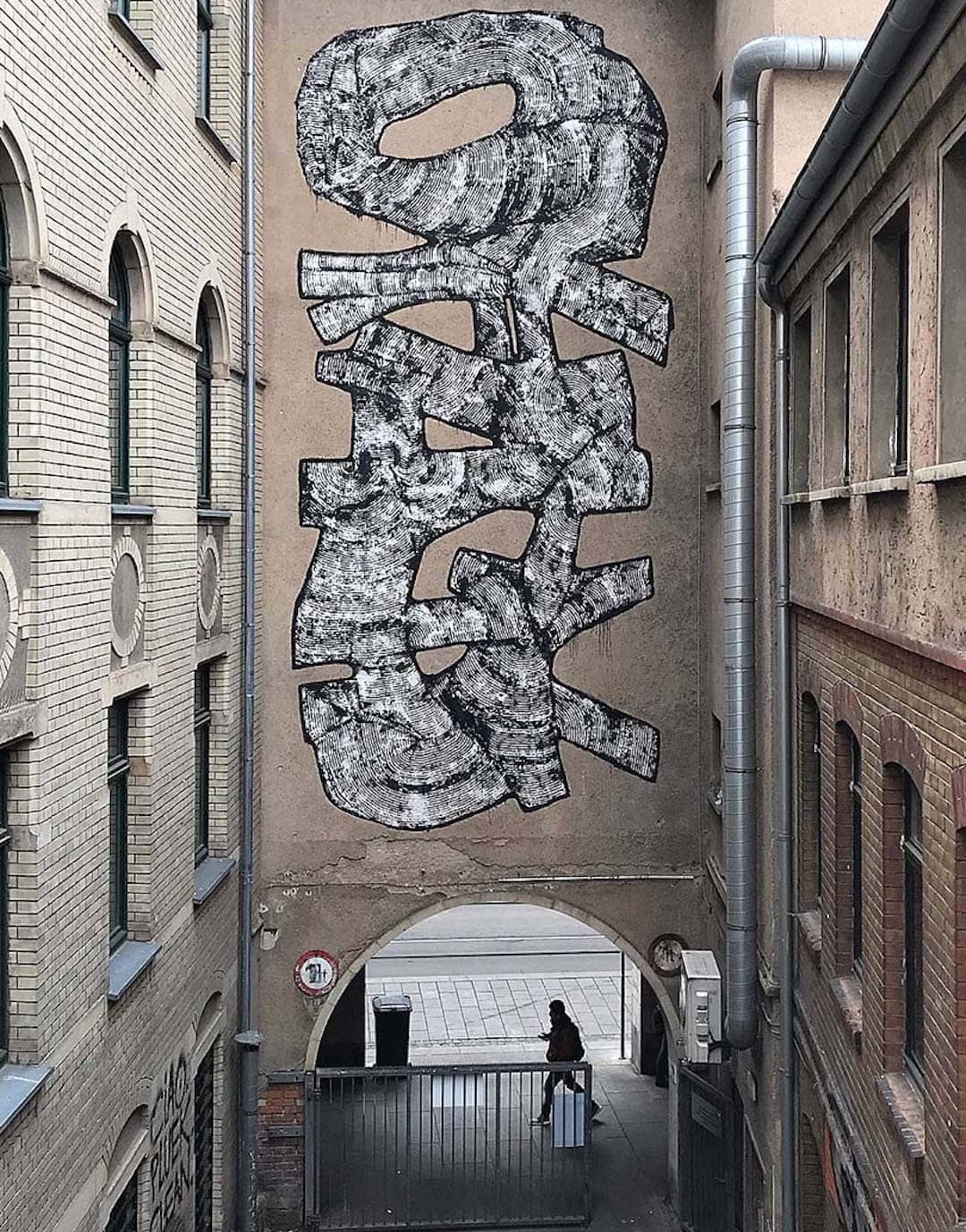
How would you describe the urban art scene in Vienna and Austria? Do you see differences from other European metropolises and countries?
I have learned over the years that the street art scene can be very different depending not only on the place, country, and mentality but also the economic situation. There are countries and cities in Europe that are strongly influenced by the hip-hop scene, with pop fonts and colors. There are cities and countries that promote and provide walls where graffiti becomes more high-end overall. Others police heavily, putting cameras everywhere, where the people doing graffiti may be acting more out of frustration. In still other places, for example in southern Italy, people are happy when someone paints a beautiful picture on the street; they feel they’ve been given a present, and maybe even bring you something to eat while you’re painting, and just deal with it in a completely different way. There, it is more an expression of freedom that is advocated for.
Street art is always a reflection of what’s going on in a country at the moment, how the people there are, and how public property is generally handled in society. Especially when you do illegal things and are seen by passers-by, the mentality in the different cities in Europe makes a big difference. In Southern Europe, I have the feeling people don’t really care; you take care of yourself and your family, and you identify more with a smaller circle. In Northern European countries, my impression is that they seem to identify more with large societies, and potentially those are more likely to be people who defend something that doesn’t belong to them, who, for example, call the police, chase you, and want that “justice” is done from their point of view.
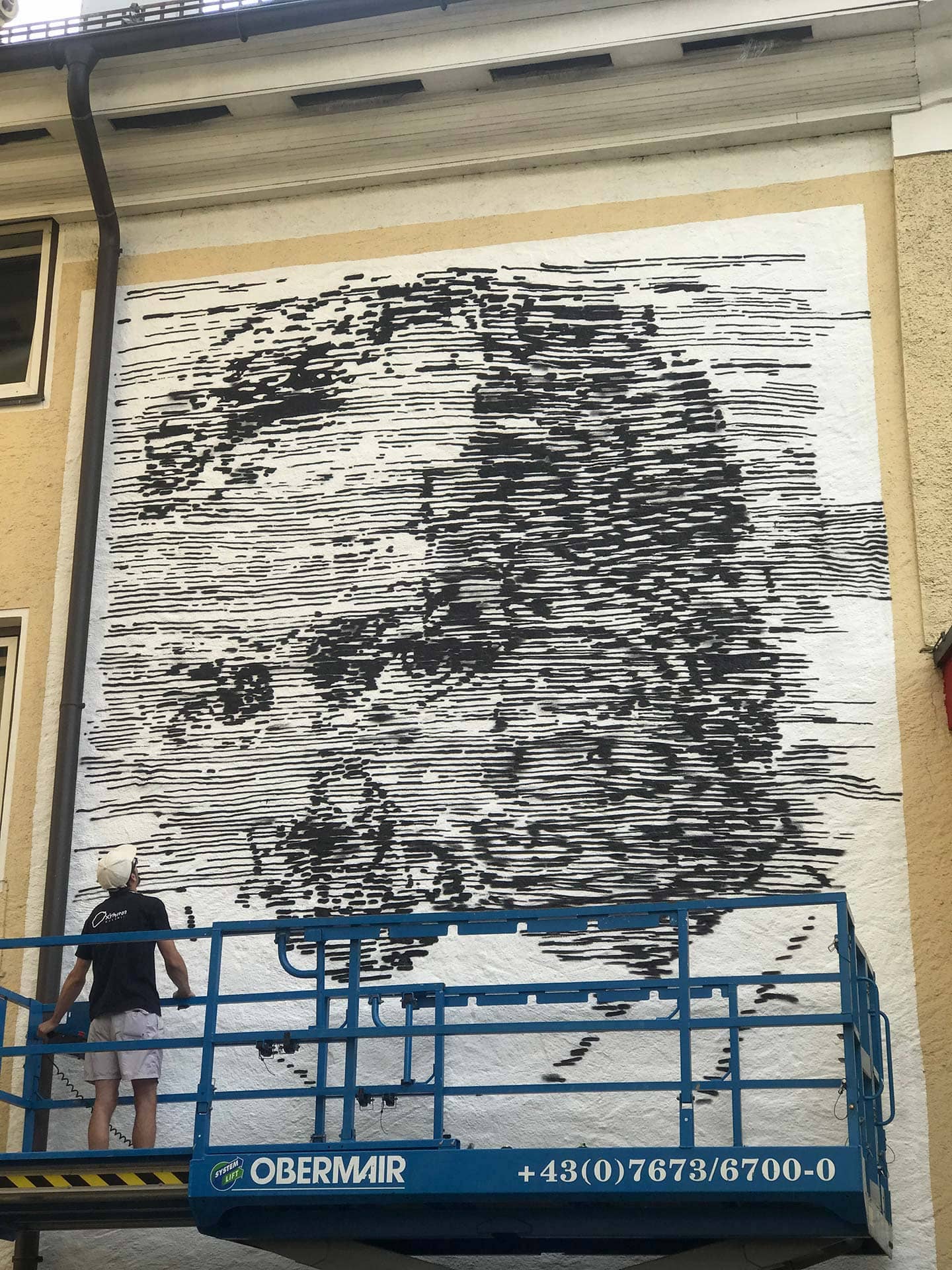
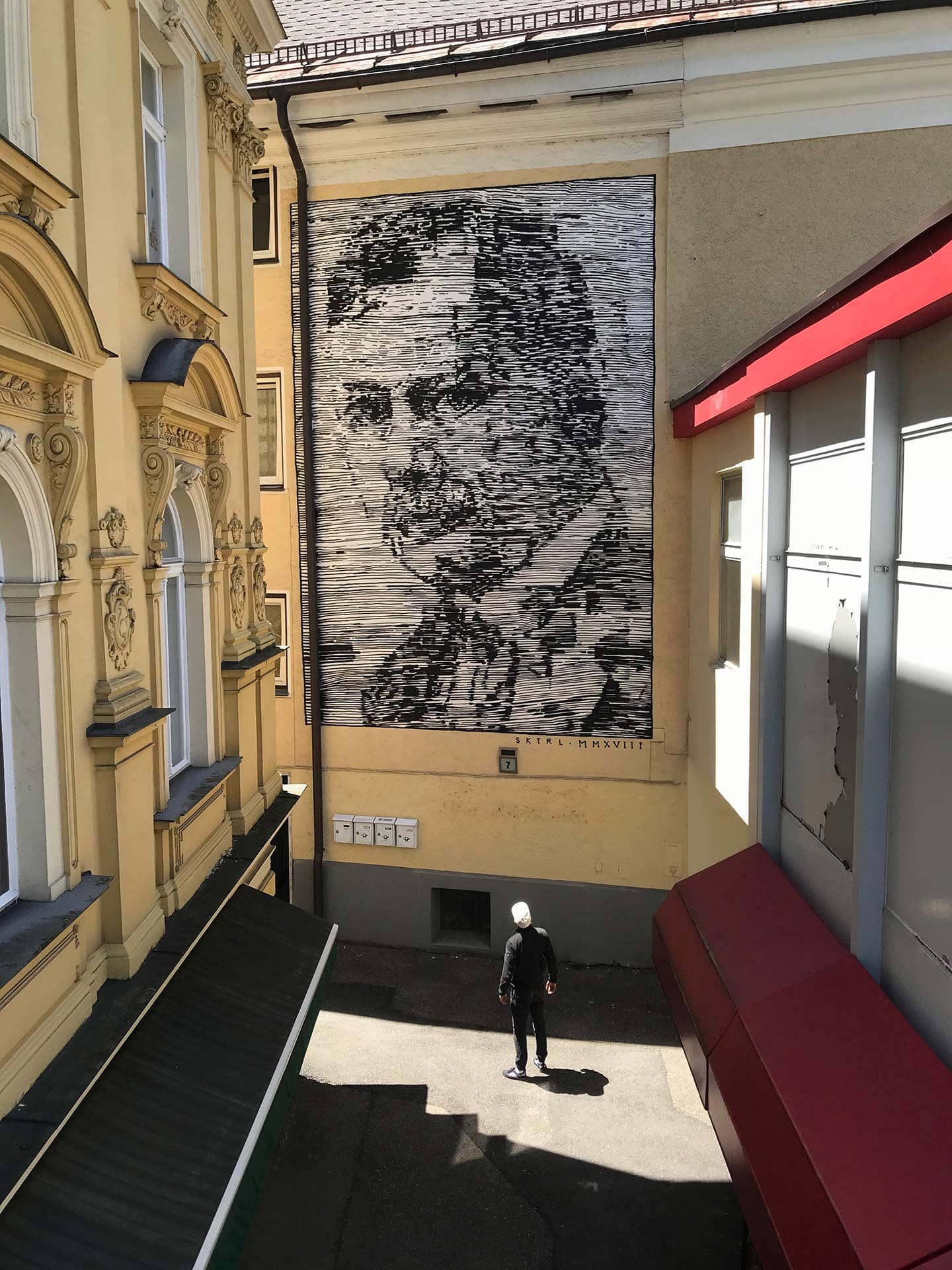
Would you also assign Vienna to the latter?
Yes and no. It’s difficult to say. Vienna is a very special case. In principle, Austrians like to make trouble, Austrians like to tell others what they’re doing wrong, but what Austrians are totally afraid of is being in the wrong. And I take advantage of that, through body language or by always having a halfway conclusive explanation ready. A simple example: If I’m climbing around on top of a building and people are yelling up from below what I’m doing there, then an answer like “I lost my drone; have you seen it anywhere?” can quickly make people feel bad. It can quickly trigger a guilty conscience and usually people even apologize. Stupidly, a little lie wrapped in a friendly but confident answer is enough and every Austrian leaves you alone. But if you bark back, then it’s over.
In Germany, on the other hand, it’s quite different again. People are a bit more correct and strategic in their thinking, and from my point of view that increases the further north you go.
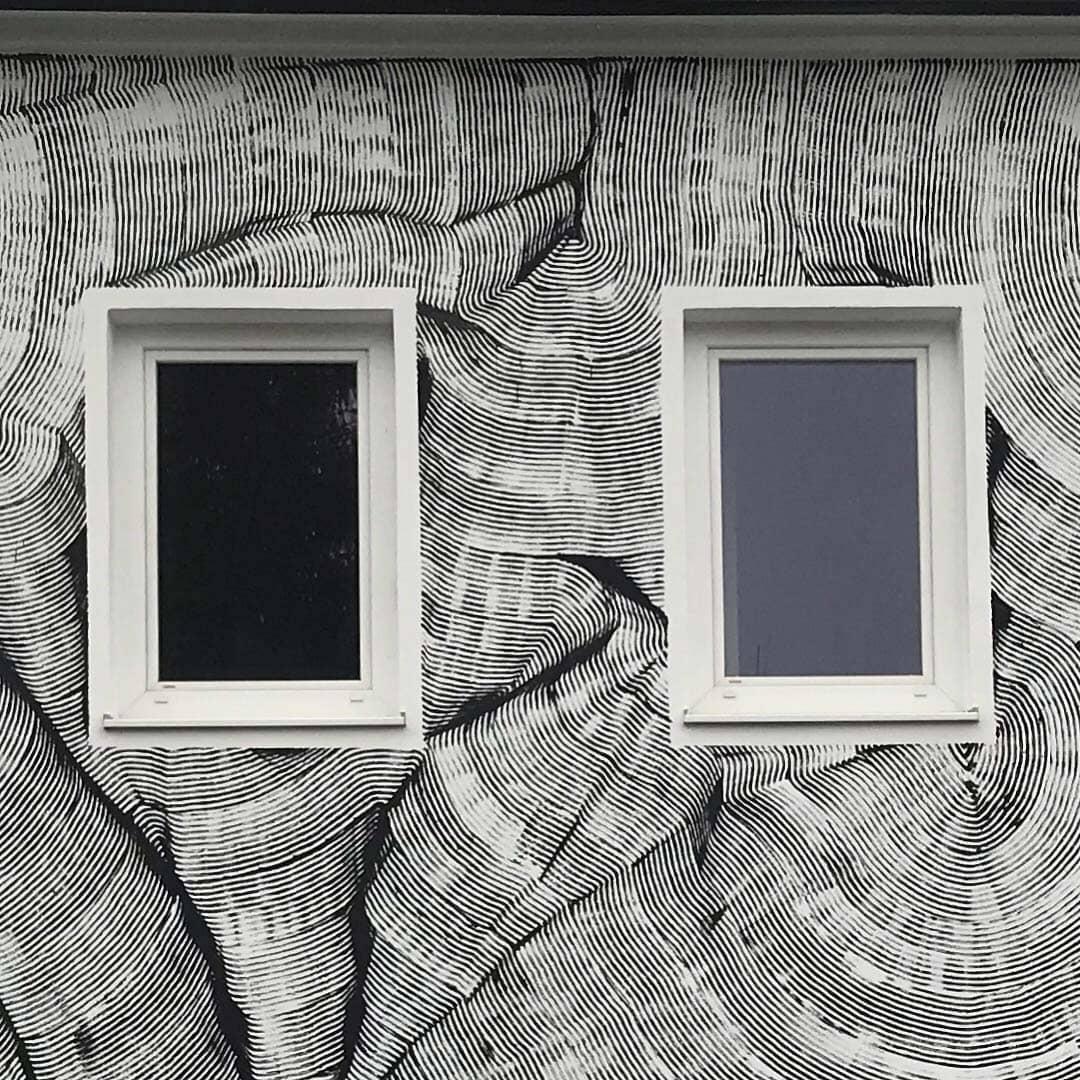
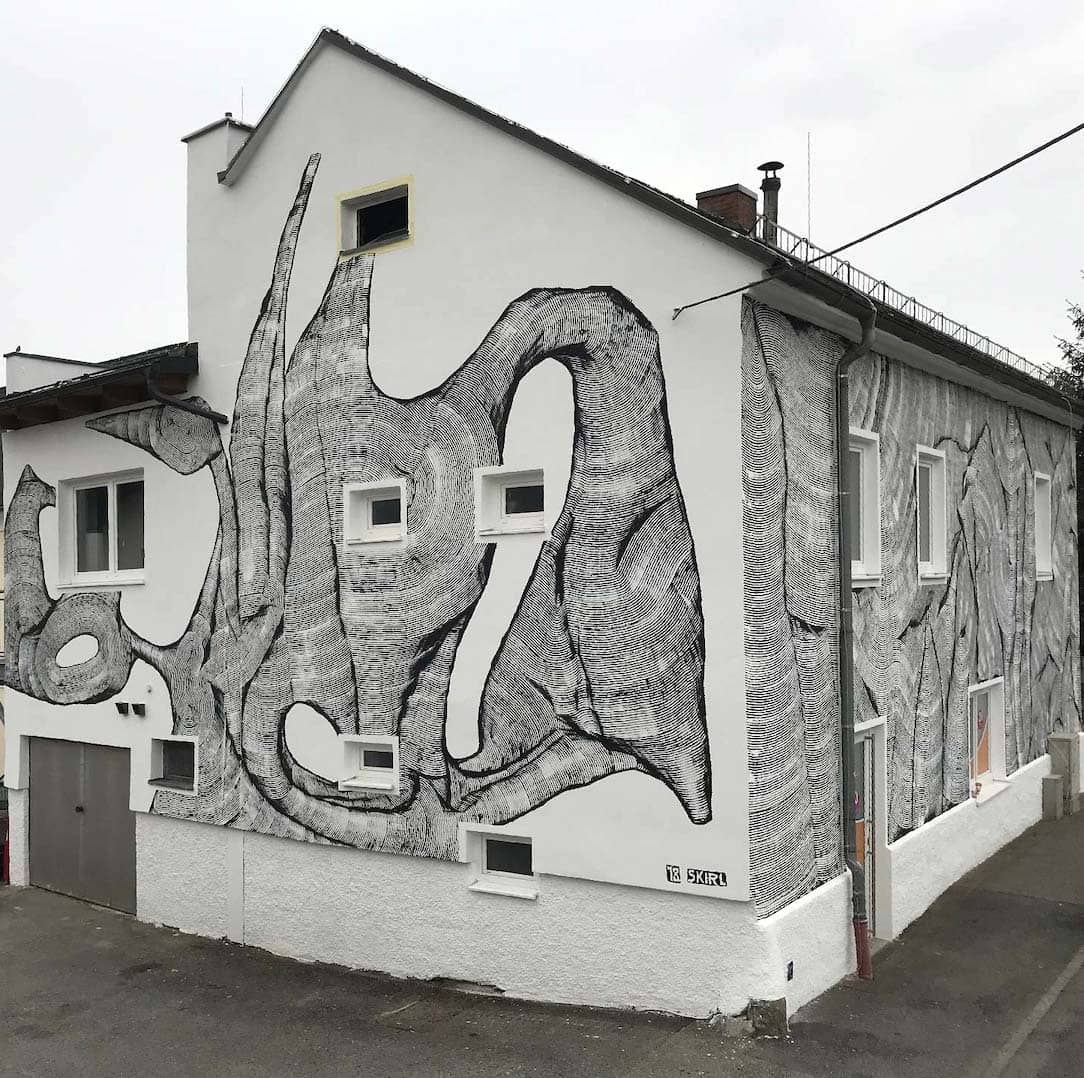
And how would you describe the Viennese scene internally?
That’s difficult to say, since I’m part of it myself. I have the impression that hip-hop is on the decline and is being replaced by a younger generation that will probably soon establish the next trend after “hippie hip-hop” and “hipster”. The classic graffiti, with highlights and 3D effects, is definitely decreasing with us. Overall, there are always new artists appearing, but they disappear after two or three years, mostly because they try to copy a well-functioning concept instead of doing something of their own. But there are also many who try out new things, also because the city of Vienna provides many walls for painting and offers people the opportunity to enter the scene and also to experiment. I also have the feeling that the quota of women has risen sharply recently.
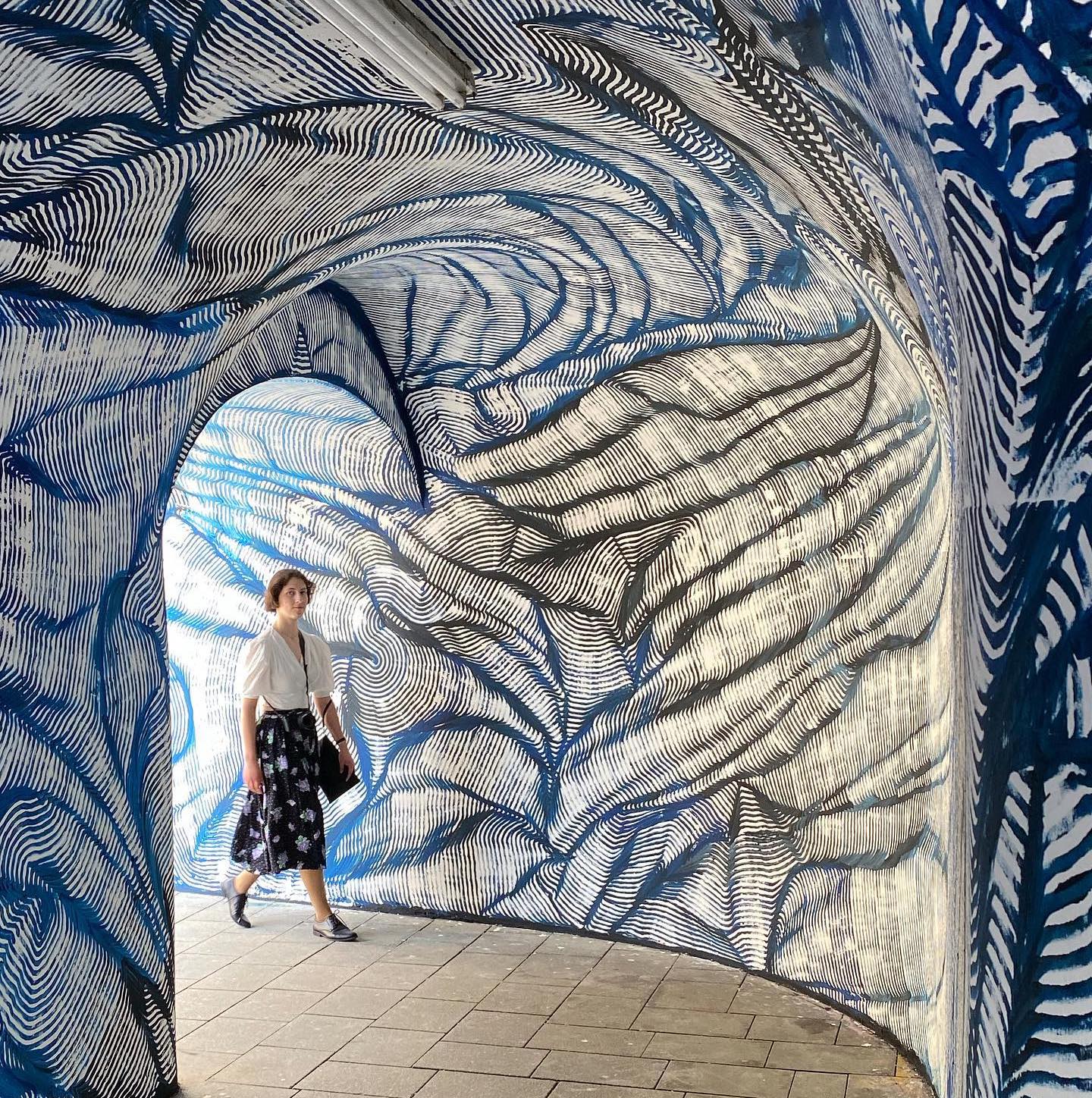
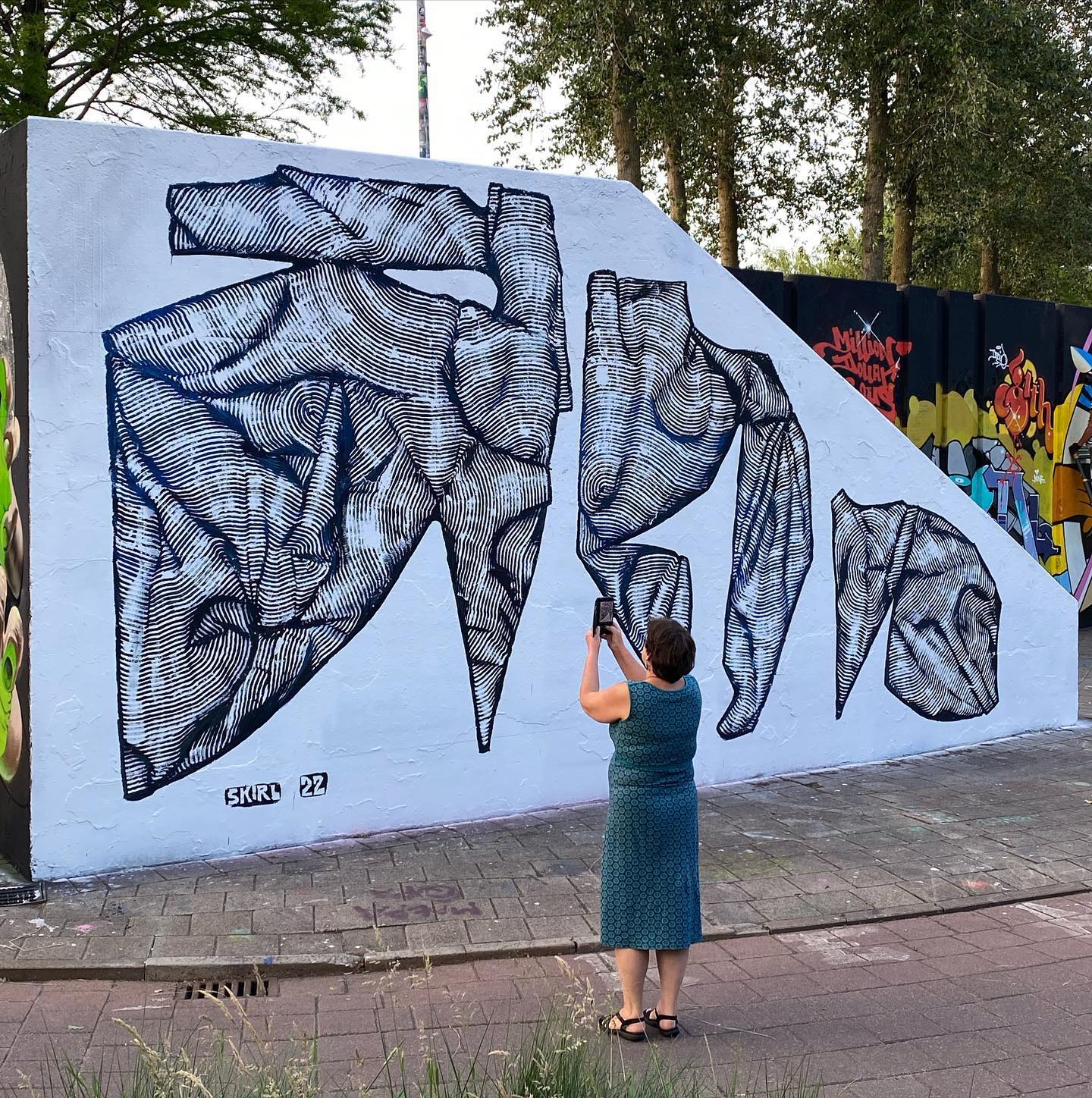
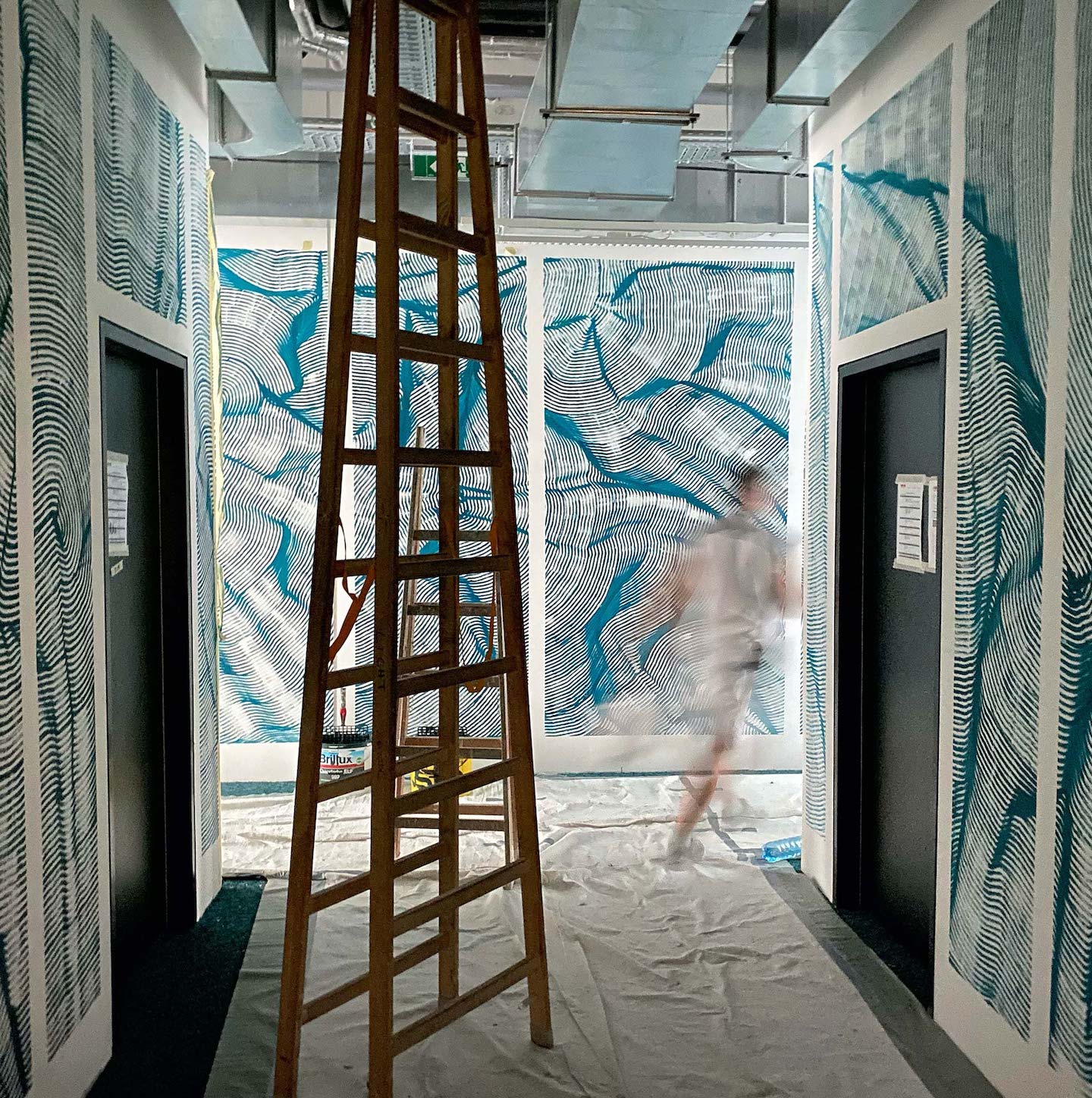
So can you say that the city of Vienna consciously promotes the street art and graffiti scene?
Yes, politically, Vienna strongly encourages the scene by providing space, which is a smart move because it means more illegal graffiti disappears under bridges, in parks, or on the subway, and the rest of the city is spared. And letting people do it and giving them time naturally increases the overall quality of the images in the long run. Other cities do it the other way around and don’t want to breed a generation of professional sprayers, which I kind of understand, but we’ll see what the right way is. In Vienna, it works because our mentality is not so motivated, in the sense of pushing the limits and doing something excessively over a longer period of time. In general, when individuals or groups practice something so extremely and excessively, they are usually internally traumatized people who are running away from something in their head. And I think, seen from a communal point of view, we have relatively few such people in Austria who are frustrated or traumatized and distract themselves from it with graffiti. So there is the intersection of people who have experienced shit and have found graffiti as an outlet to relieve the frustration, but at the same time also have enough money to buy spray cans and have enough time to pursue this extremely time-consuming hobby. There are simply quite few of these people. The way I see it, the frustrated people in our country are rarely sprayers, and the sprayers are rarely frustrated. A lot of graffiti in the city that tends to be classified as “vandalism” is by artists from abroad who also do a lot of it here in Vienna. The Viennese scene itself is relatively small and always has been.
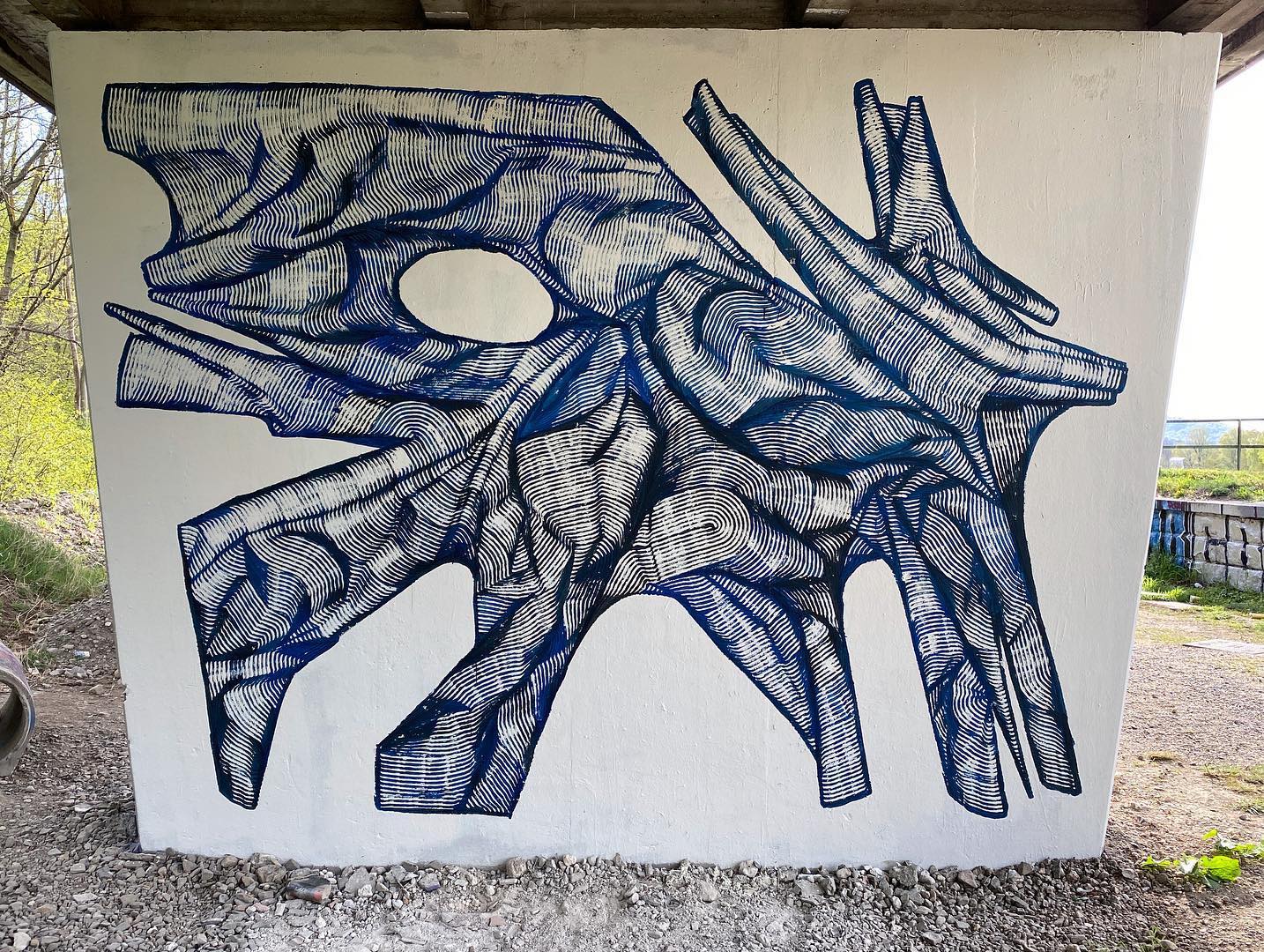
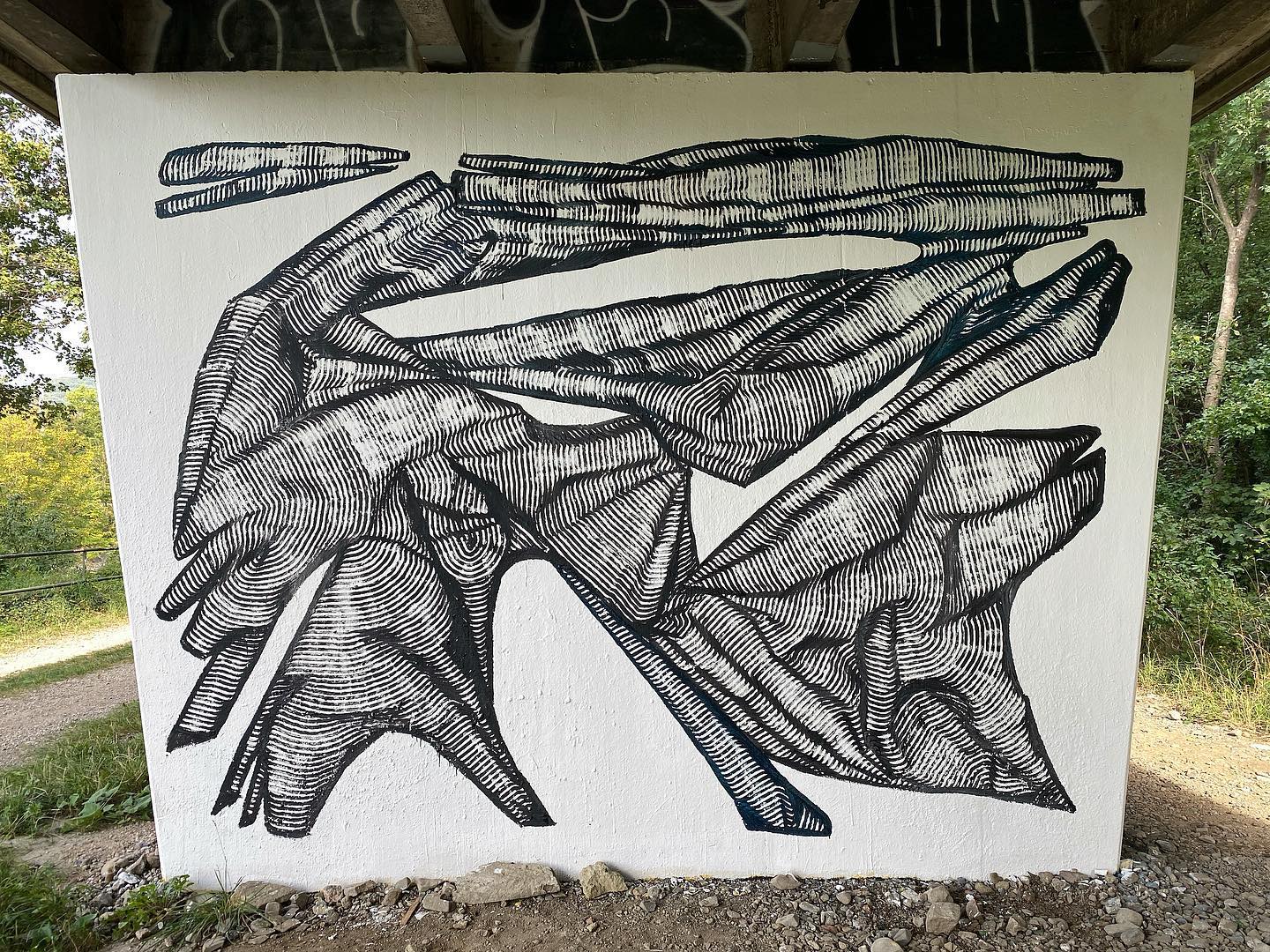
What do you think is the role of the artist in today’s society?
The role of the artist – that doesn’t exist for me at all. I think there are professions where you can say that there’s a role and it’s very clear what’s supposed to come out of it. With art, it’s not like that. Even though I’m not that kind of artist myself, I think it’s nice when people convey a message with their art. I like it when it’s subtle and not so “in your face” Banksy-like. I don’t like it when it’s too easy to consume, although I also understand that works better for the masses these days. Still, in my opinion, the role of the artist is nothing at all, except to make art. Everyone can do that as he wants and it is not necessarily bound to any training or certificates. And in the same way it is not definable.
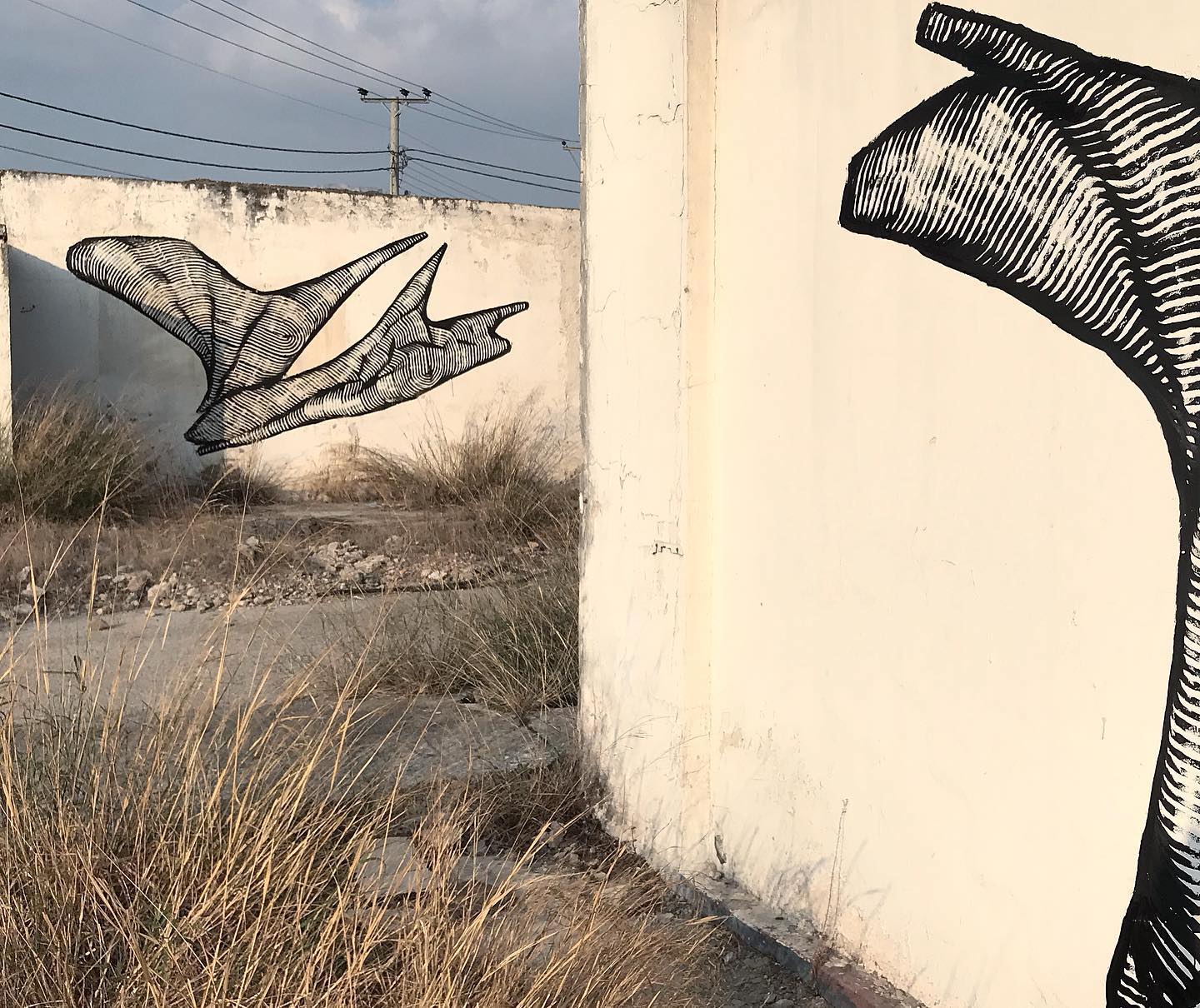
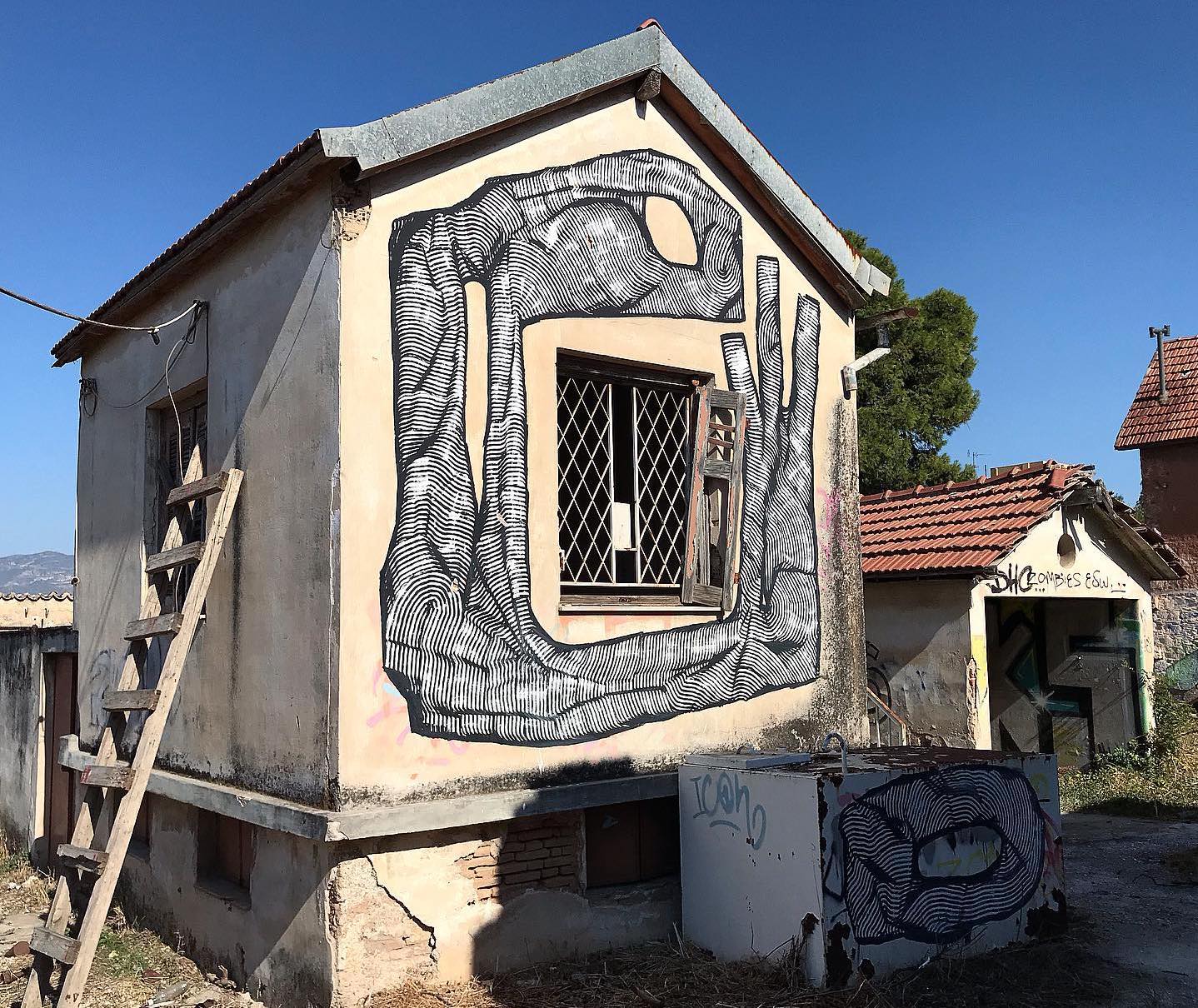
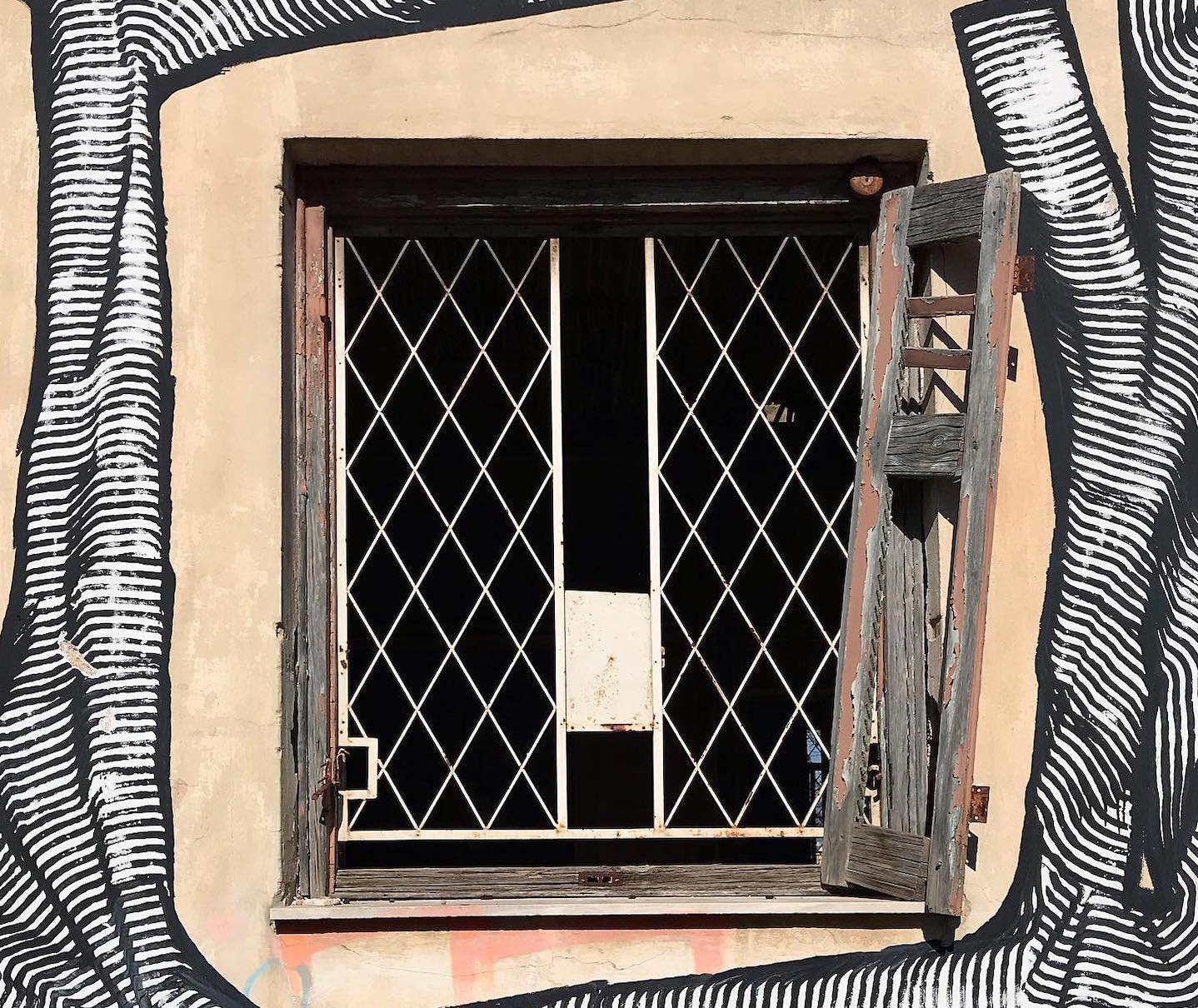
Does the digital dimension, in terms of NFTs, play a role for you?
Honestly, I’m happy when I can turn my phone on and off. On the other hand, I have very good friends, in other countries, who got into NFT very early, which meant I knew what it was all about from the start and saw the potential. I also sometimes get annoyed that I didn’t get in a bit earlier, but I have to say that a currency that needs so much energy to exist and be safe costs us all a lot, if you know what I mean. As long as no solution is found to carry out a monetary reform without needing permanent energy, it’s not appealing to me. When the NFT technology increases in efficiency, as many other things have done in the past (to be more precise, by a thousand times in about ten years), such as computer chips, then we can talk about it again.
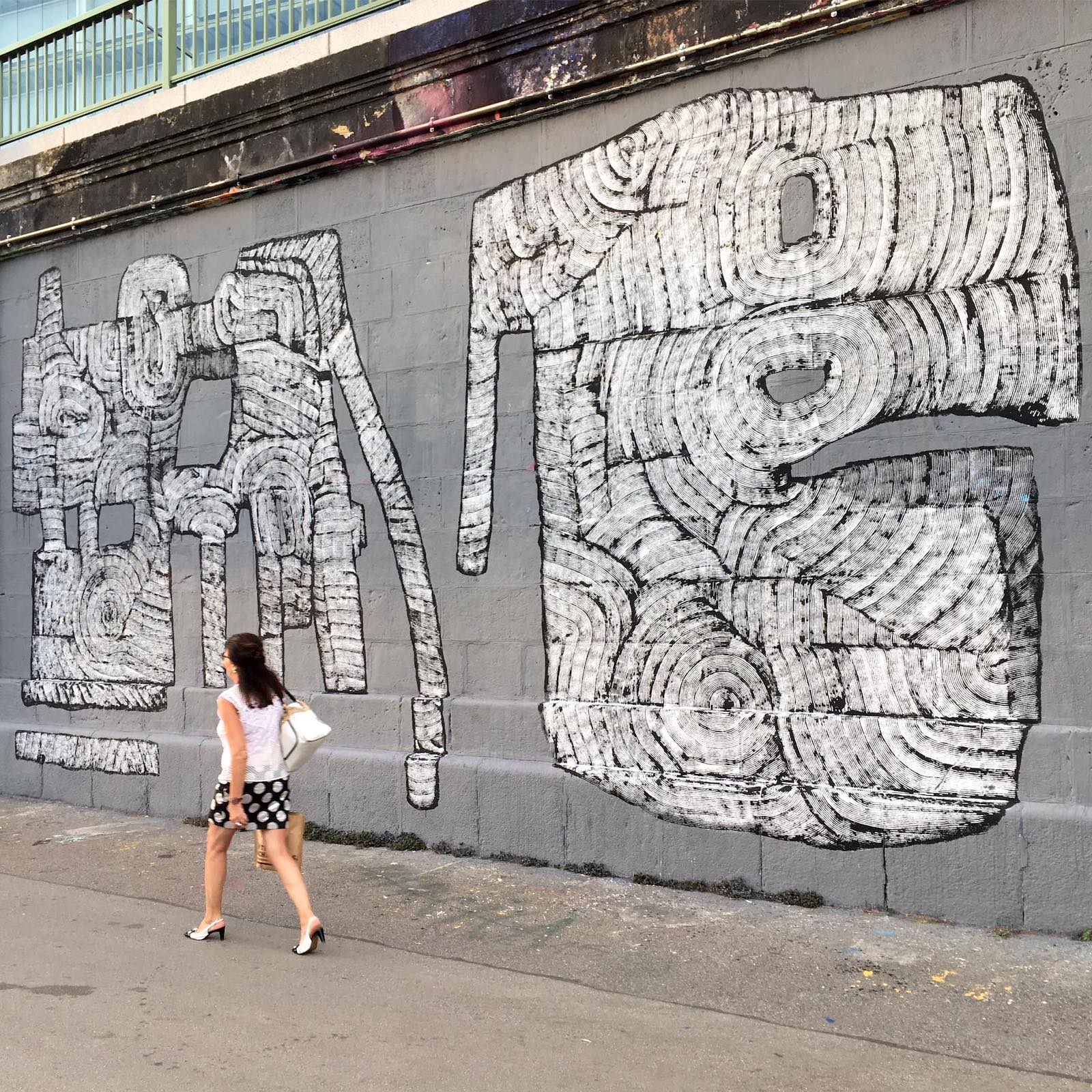
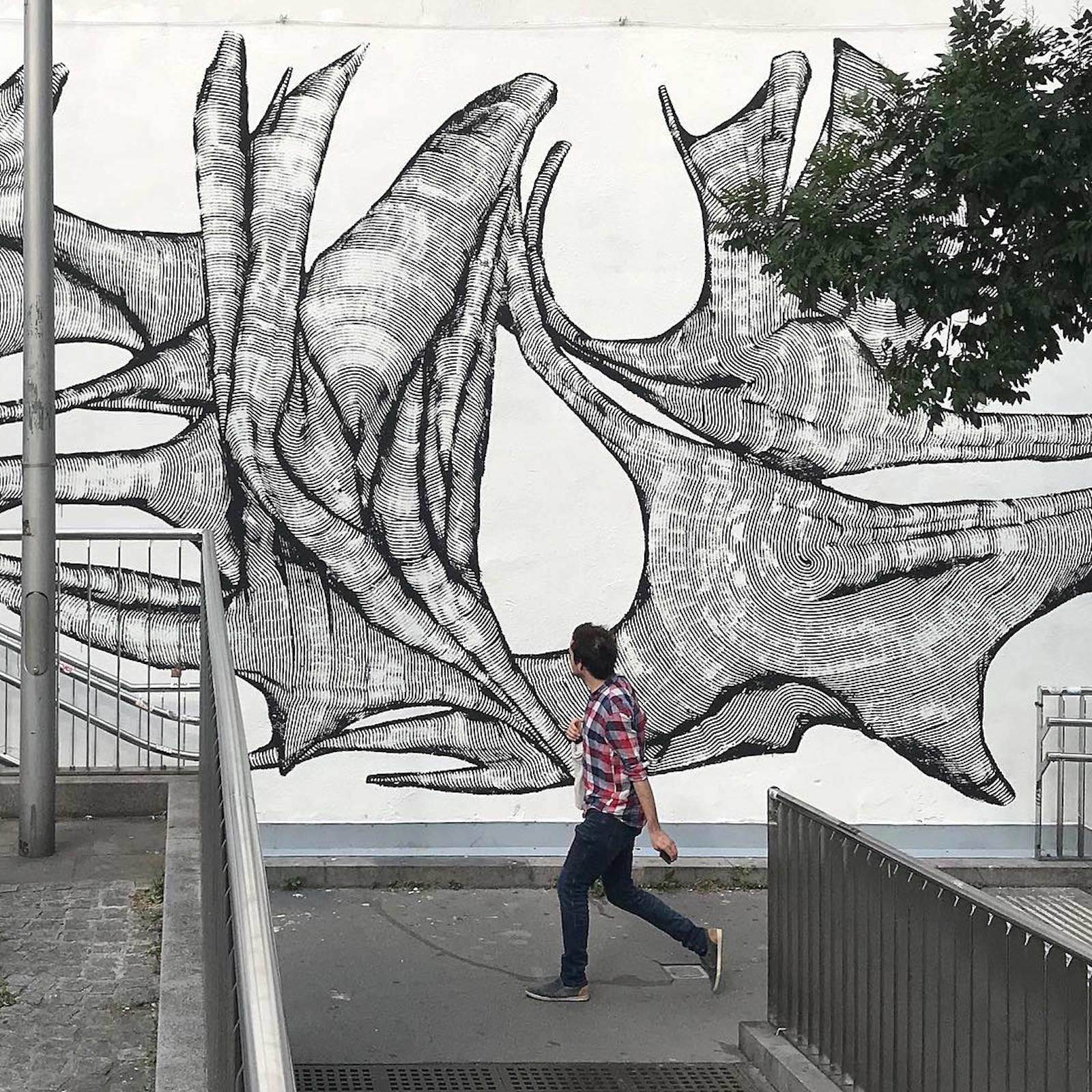
What are you currently working on? Ideas, plans, dreams for the future?
I have a relatively turbulent time behind me. The last 12–14 months have been pretty heavy, with many ups and downs and sharp turns, which means I have now had to reorient myself, have had to fight with depression-like states and thus have showed and sold a lot from the archive and participated in relatively few projects. That’s all changing. I’ve been on the road a lot the last few months and am now trying to turn over a new leaf, tweak things, and do things differently. I’m working on new tools that can work even better and convey the aesthetic I want to portray. I have a new studio space that I’m setting up and then trying to establish step by step. And I have a lot of projects that are currently in this pre-phase, where you discuss what would be theoretically possible and how you could collaborate, where there are a lot of exciting things that I’m really looking forward to, even if for many reasons they never all make it out of the pre-phase into implementation. I would like to work more with the textile industry in the future, because there are great projects possible and my style and work can be transported well. I would also like to work with certain household items, be it bedding, ceramics, flowerpots, or board games – simple things that everyone can use and that I would like to design. In the past I always wanted to paint big walls, be a classic mural artist, but now it has developed in a different direction and I also enjoy the smaller things. One can be curious.
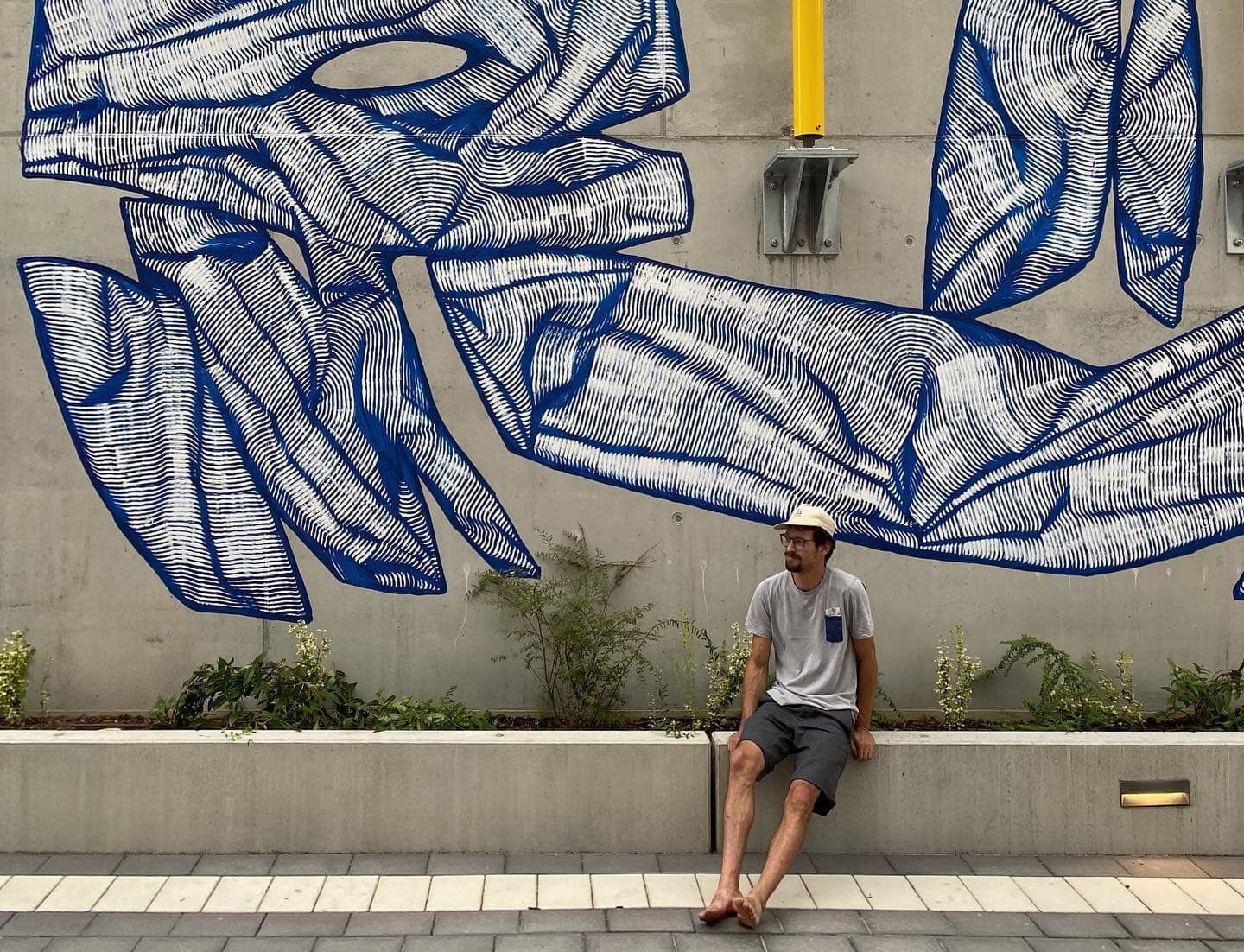
_______________________________________
Pictures © Manuel Skirl
September 2022
by Laura Vetter



